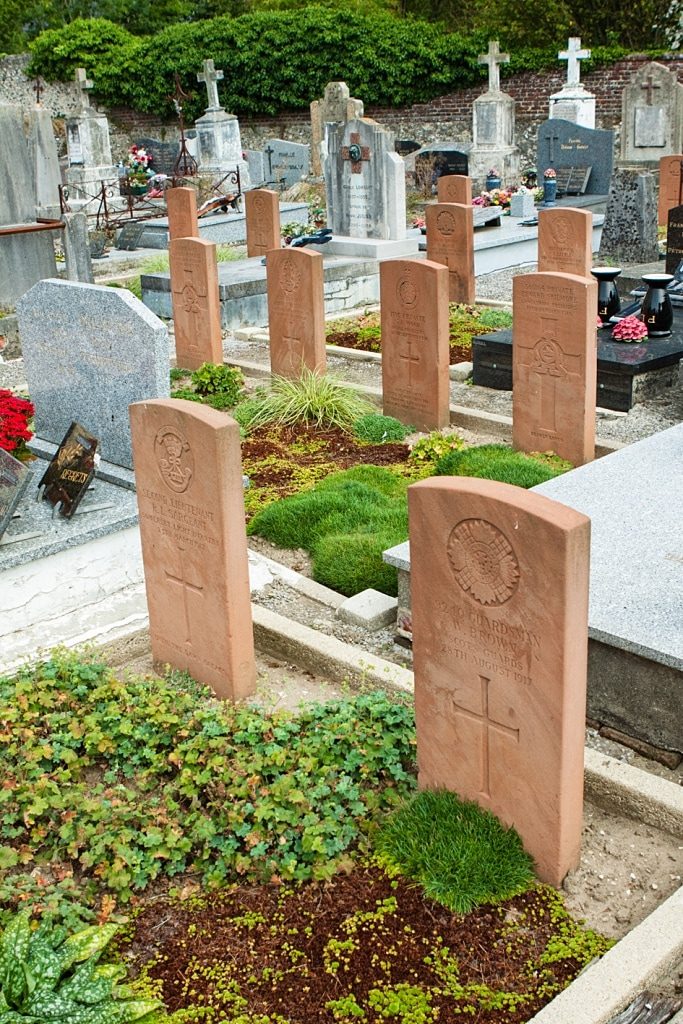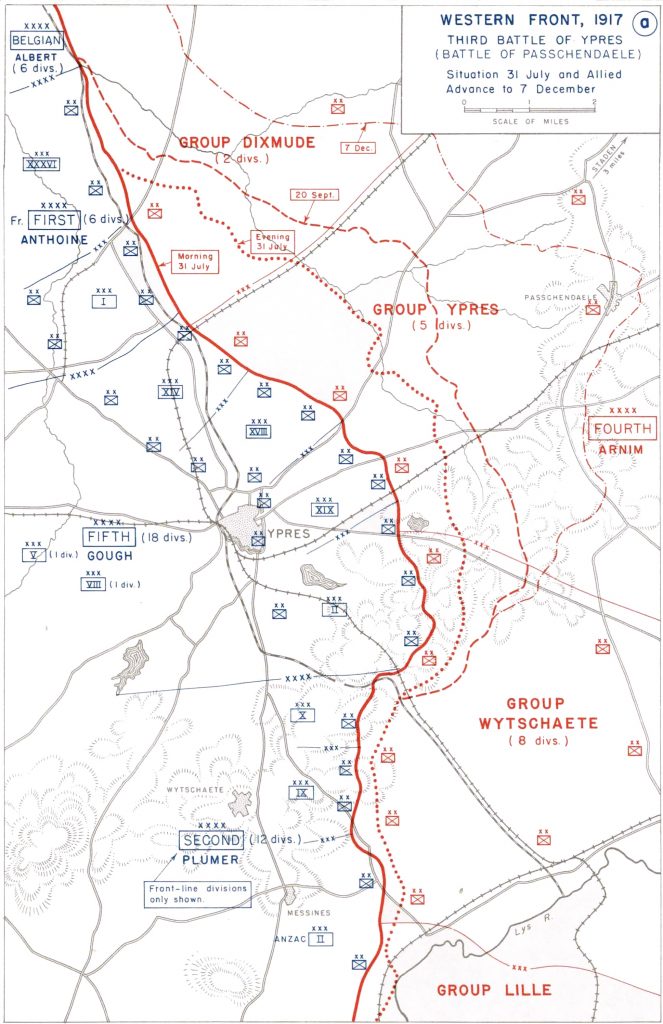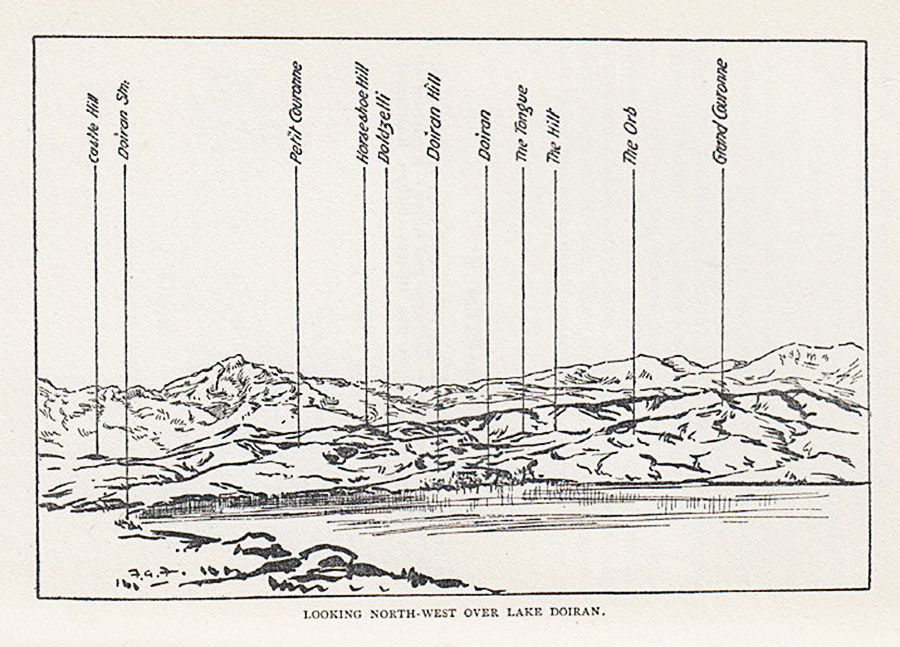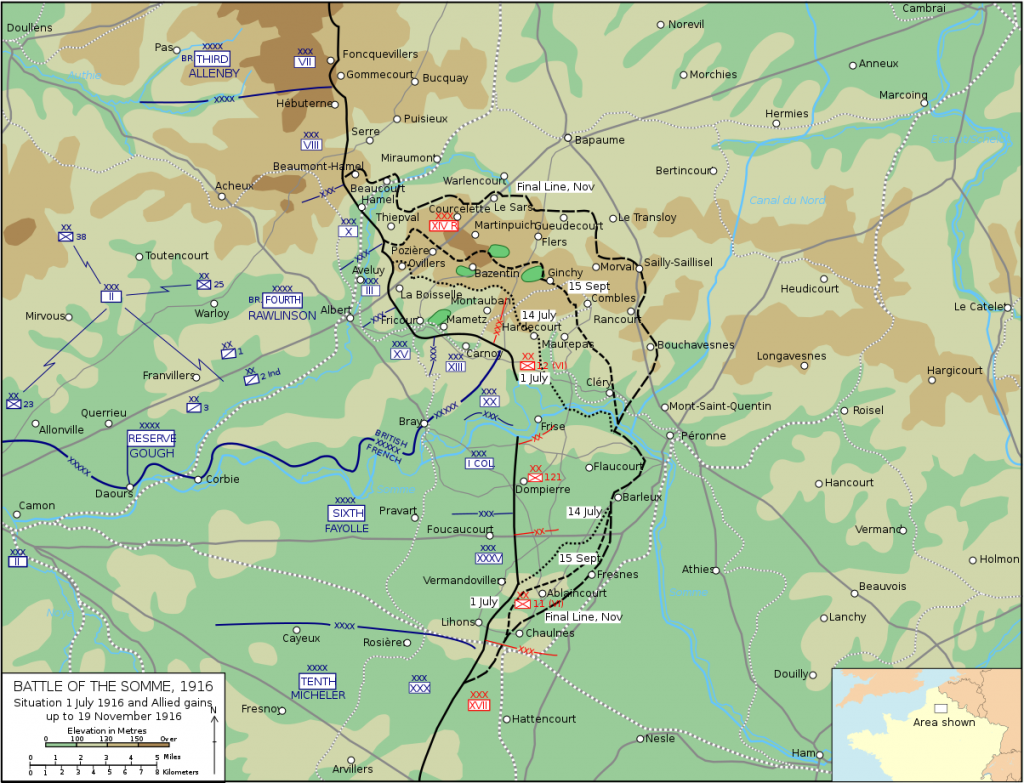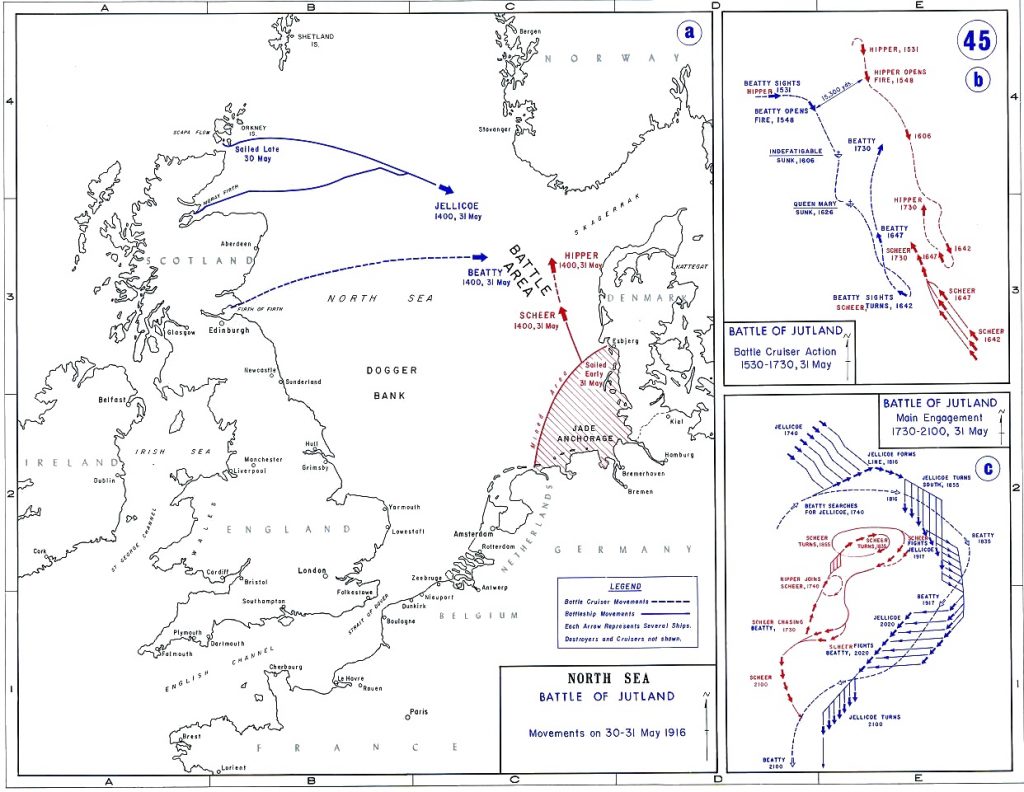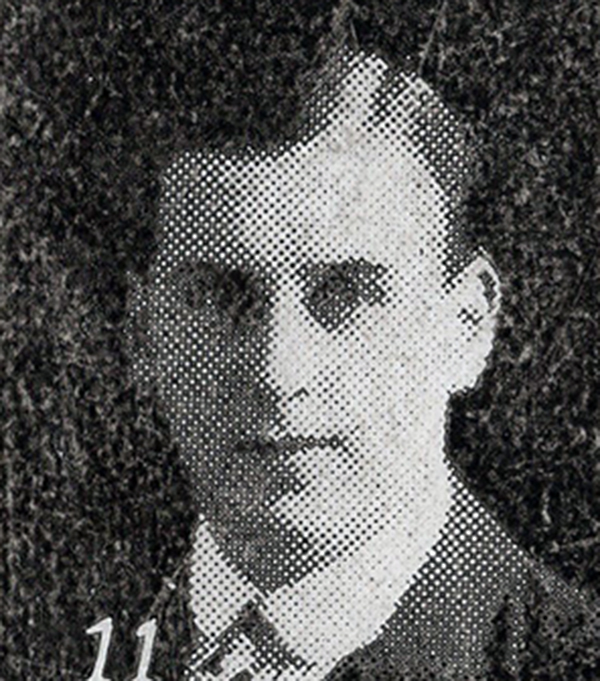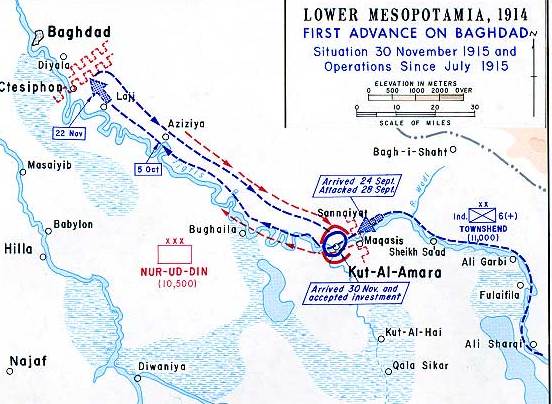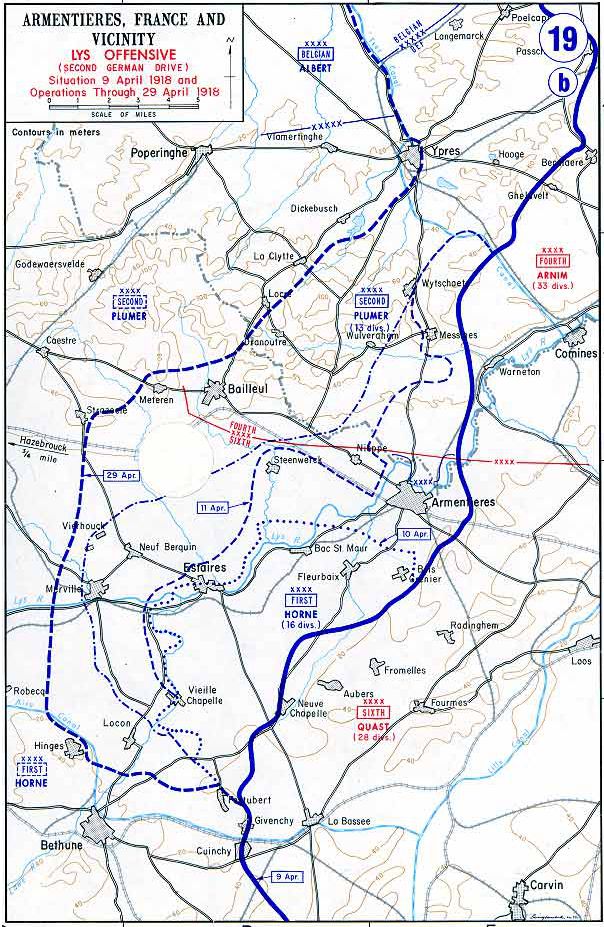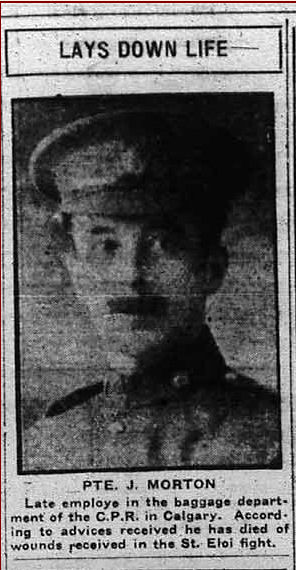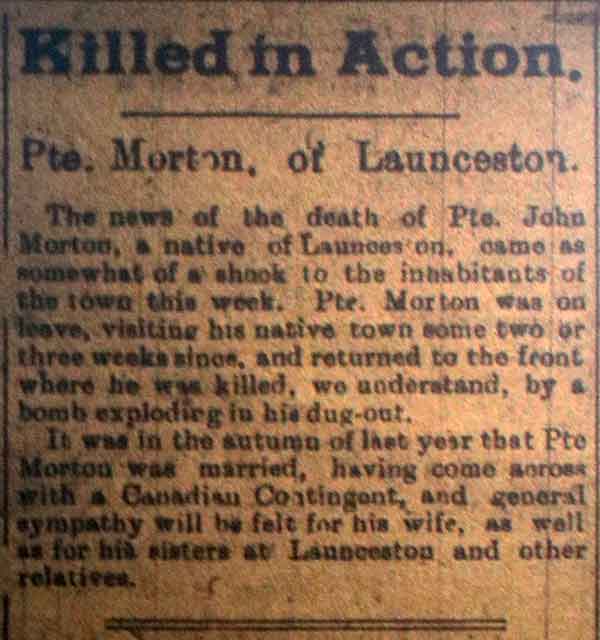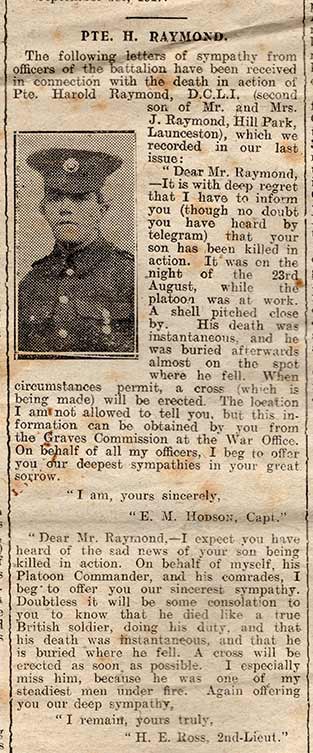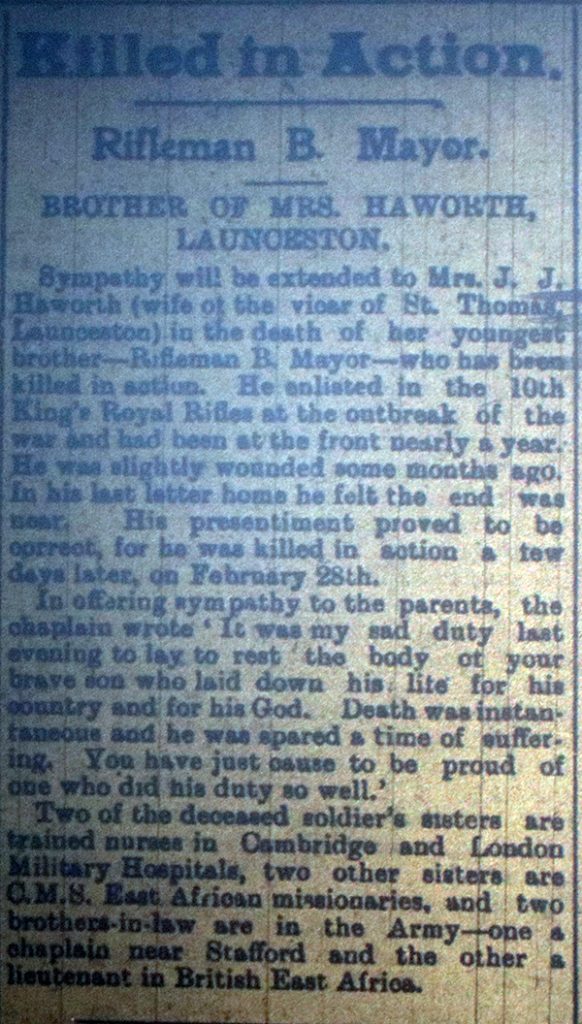.
Being the 100th commemoration of World War One in 2018, I felt it would be fitting to research the 83 names on the War Memorial and attempt to give more of a narrative on their lives and how and where they served their country during that horrific time. Some of the men appear on other War Memorials within the area mainly due to the fact that they were born there. I have also added the men that appear on the respective Church rolls of honour although some do not appear to have any direct link with Launceston, but maybe their parents had moved into the area which no presently available records would show.
Ironically, the task has not been helped due to the blitz of the Second World War in which much of the records attaining to the First World War were either damaged or destroyed. However, I have managed to glean what I can from what remains and also by looking back on census forms and old newspapers. I cannot guarantee that the transcriptions are wholly accurate due to the brief details that I have worked with, but it is an honest attempt at giving the Fallen a lasting tribute.
The research is not complete as there is one name that I have been unable to find any information on whatsoever and if there is anyone who can help fill in the gaps, please contact me at rogerpyke1@gmail.com. The name that as yet there is no information on is:
T BENNETTS (Thomas from South Petherwin? Or possibly the Sergt-Major wounded in the face reported in April 1918).
It is hoped this proves to of interest to the reader and more importantly, a respectful homage to the brave Men and Women who gave their lives. I would also like to thank Peter Bailey, Claudine Malaquin, Dennis Middleton, Jim Edwards, Martin Kelland, Grant Lethbridge Morris and Michael Willis for their invaluable help in compiling this narrative plus the resources that are freely available at Launceston Library.
Roger Pyke, 28th October 2014
B
C
Douglas Ophia Edward Gordon CAVEY
E
F
G
H
J
L
William Mervyn Johnes LLEWELLYN
M
Robert William Digory MADDEVER
Samuel John MARKS
N
O
P
R
S
T
Harriet Dorothy Margaret THOMPSON
V
Darrell Francis Stephen VOWLER
W
Those not listed on the War Memorial
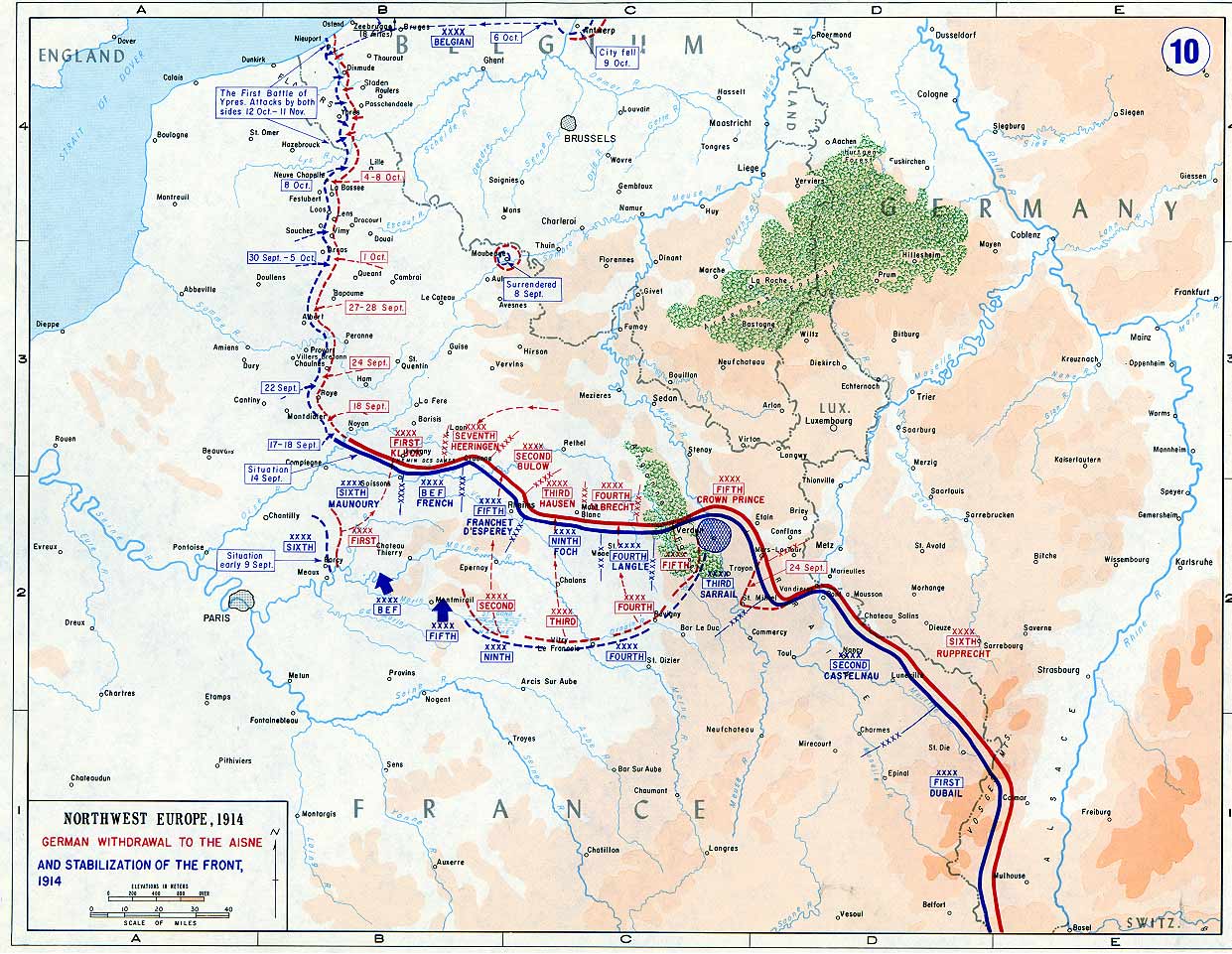
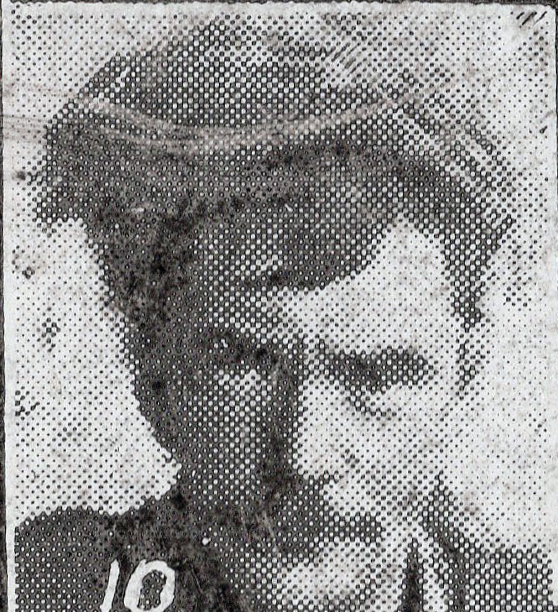
William was born in 1886 at 14 Hillpark Cottages, Launceston to Richard and Jane Adams. He had two Sisters and a Brother. In the 1911 census he is living at Woodbine Cottage, Launceston with his wife Ellen (nee Hill) having married on the19th of September 1910. Like his Father, William worked as a Mason. In 1915 he joined the Royal Engineers Pioneer 335th Road Construction Company (Regimental No 240305) as a reservist and was mobilized on the 16th of February 1917. At the time of his enlistment he was living at 3 Hendra Cottages, Launceston. He received multiple gunshot wounds on the 23rd of April 1917 which ended his war as he was discharged on the 15th of January 1918 as being no longer fit for military service. These wounds were so severe that he died just six days before the armistice on the 5th of November 1918 and he was buried at Launceston Cemetery. He left behind three children Sydney, Freda and William. Silver War Badge Number:
314761. He is commemorated on the Launceston War Memorial and the Wesleyan Roll of Honour.
Preparation for the Battle of Arras 1917
From October 1916 the Royal Engineers had been working underground, constructing tunnels for the troops in preparation for the Battle of Arras in 1917. Beneath Arras itself there is a vast network of caverns called the boves, consisting of underground quarries and sewage tunnels. The engineers came up with a plan to add new tunnels to this network so that troops could arrive at the battlefield in secrecy and in safety. The size of the excavation was immense. In one sector alone four Tunnel Companies of 500 men each worked around the clock in 18-hour shifts for two months.
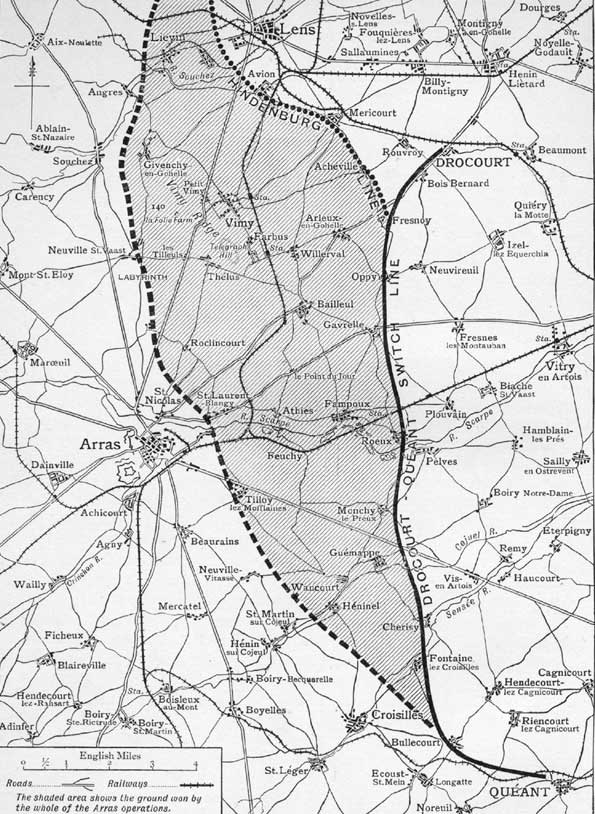
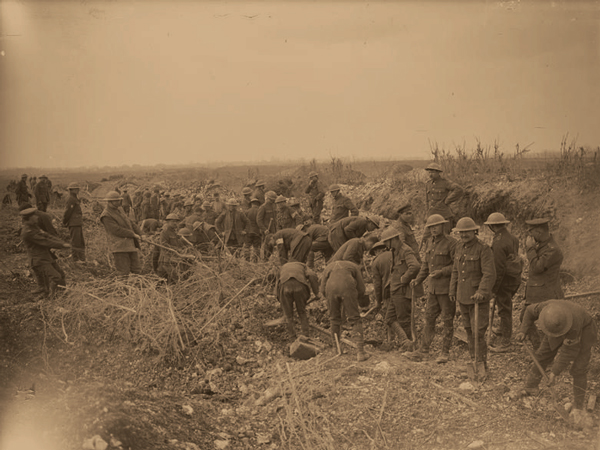
Stanley BARTLETT
Stanley was born in 1891 the youngest of 5 Children to Richard and Mary Jane Bartlett at Langore, St. Stephens, near Launceston. His Father worked as a general Labourer but died just after Stanley was born. The family had moved to Bridge Cottage, Newport by1901. By the time of the 1911 census, Stanley was the only child living at home with his Mother who now worked as Laundress. Stanley was listed as a Wood Sawyer, however on the 23rd of April 1911 he arrives in St John, New Brunswick, Canada. In the 1911 census of Canada he is listed as a boarder, living in Lynn Creek, British Columbia, Canada. He is single and his occupation is teamster. He was conscripted on the 12th of June 1918 with the Canadian Engineers (Regimental No. 2024216) as a Sapper. He was listed as Height 5ft 8 3/4 inches, Complexion – Fair, Eyes – Grey, Hair – Reddish. No distinctive marks. He died of TB on the 23rd of October 1918 and was buried at Prince Rupert (Fairview) Cemetery, British Columbia, Canada, plot B.T. 1.43. P.1. His next of Kin was his sister, Laura Causley address St Thomas, Launceston, the Mother of Launceston’s renowned Poet, Charles Stanley Causley, who wrote a poem called ‘Uncle Stanley’ in memory of Stanley. He is commemorated on the Launceston War Memorial.
Dudley Charles BENNETT
Dudley was born 1897 to Daniel and Gertrude Bennett at Lowestoft, Suffolk. His Father was a Baptist Minister which brought the family to Launceston sometime between 1902 and 1911 taking up residence at Melrose, St. Thomas Road. On leaving school Dudley, became a Chemists Assistant.
Dudley enlisted with the Royal Army Medical Corps (Regimental No. 74133) in 1915 at Bodmin but was transferred to the London Regiment on the 15th of May 1916 (Regimental No 702247) serving in the 23rd Battalion. He saw service in France for 6 months in 1916 before embarking to Salonika in December 1916 until June of 1917 whereby he his Battalion were transferred to Egypt on the 15th of June 1917. He was killed in action in the Egyptian theatre on the 7th of November 1917. He is buried at the Jerusalem Memorial, Yerushalayim. Israel. He is commemorated on the Launceston War Memorial and the Dunheved College Memorial.
London Regiment 23rd Battalion deployed to Egypt in June 1917 and engaged in various actions as part of the Palestine Campaign including; The Third Battle of Gaza, The capture of Jerusalem, The defence of Jerusalem.
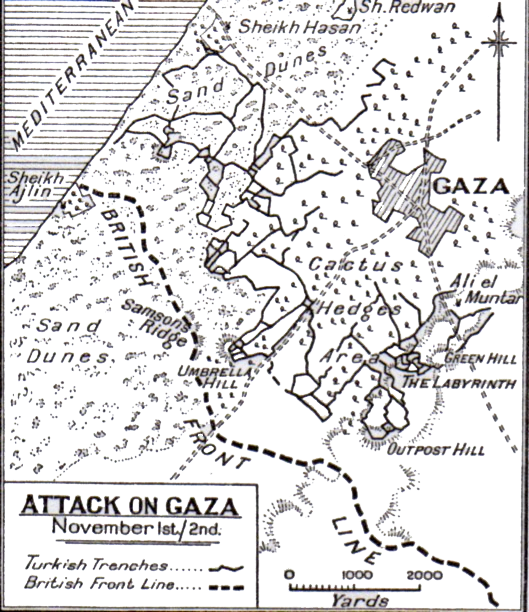
T BENNETTS
The only T. Bennetts I can find is a Thomas Bennett born at South Petherwin in 1886 to William and June Bennett. William was a Stone Quarry Foreman. By 1911 Thomas is working as a Printing Compositor in London living with his Uncle, Charles Thomas Hawke Bennett at 6 Allerton Road, Stoke Newington. He may have served with the Royal Navy but I have as yet not found anything on his military service. He died on the 2nd of July 1919 and is buried in the Launceston Cemetery. There is a Sergeant-Major Bennetts serving with the D.CL.I. Who was wounded in the face in April 1918 but there are no other details. He is commemorated on the Launceston War Memorial.
Charles BICKLE
Charles was born in 1887 at Newmoor, Polson Bridge, Launceston to William and Mary Bickle. His Father worked as a Dairyman. By the 1911 census, he was married to Alice (nee Davey) and living in Westgate Street with his one year old son William and listed as being a farmer. They eventually set up home at 3, Holborn Terrace, Launceston. He joined the DCLI 6th Battalion as a Private (Regimental No. 33619). He died of his wounds sustained in battle (possibly at the ‘Battles Of Ypres – Fighting On The Menin Road’) at Etaples, France on September 11th, 1917. Etaples was a large area containing over 11 Hospitals which was some distance from any danger from the enemy. Even then the Hospitals were bombed and machine gunned from the air.
He was interred at Etaples Military Cemetery XXV. P. 3. He is commemorated on the Launceston War Memorial and the Wesleyan Roll of Honour. Alice passed away in 1964 while still living in Launceston.
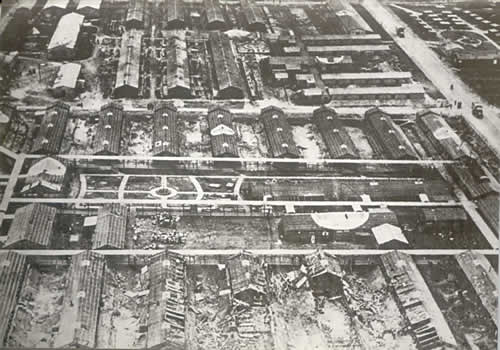
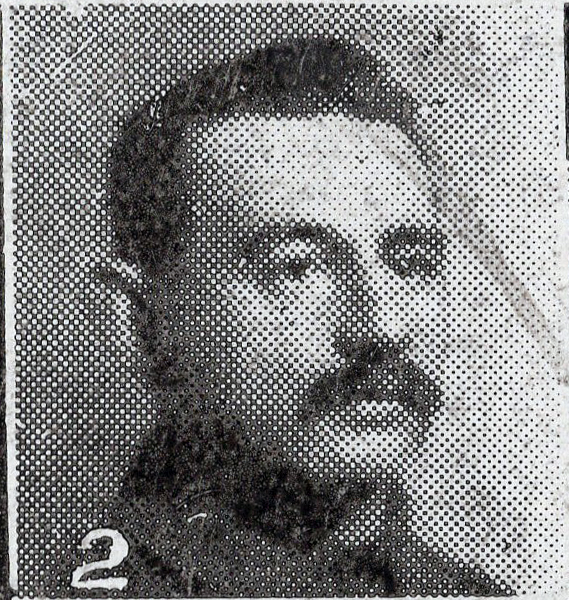
Born to George and Mary Brendon in 1887 in High Street, Launceston. His father was a watchmaker/jeweller. On leaving school George followed into his Fathers business. He joined the R.A.S.C (Regimental NO. 016368) but transferred to the Lincolnshire regiment being part of the 8th Battalion (Regimental no.41720). George was KIA on the 31st of July 1917 the first day of the 3rd Battle of Ypres, better known as ‘Passchendaele’, possibly in The Battle Of Pilckem Ridge. His body was never identified but his name is commemorated at Ypres (Menin Gate) Memorial and the Launceston War Memorial and the Wesleyan Roll of Honour.
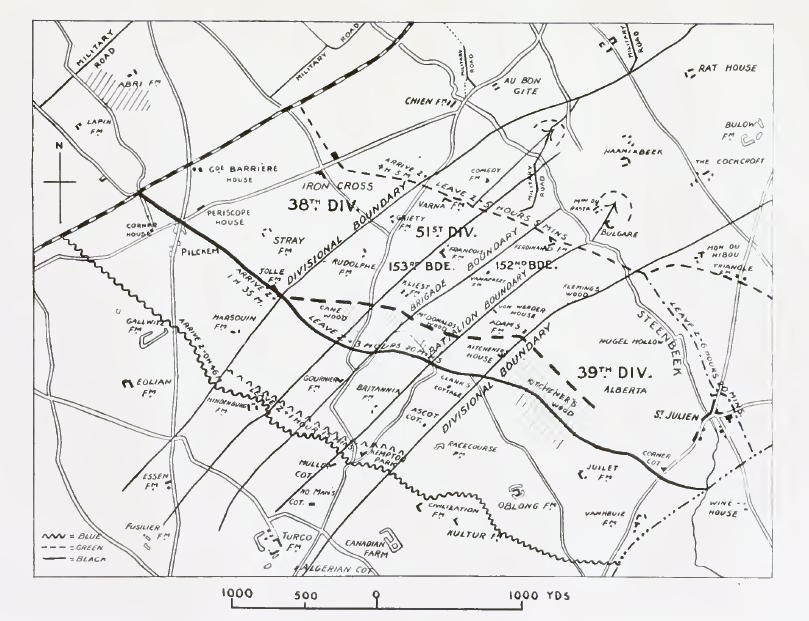
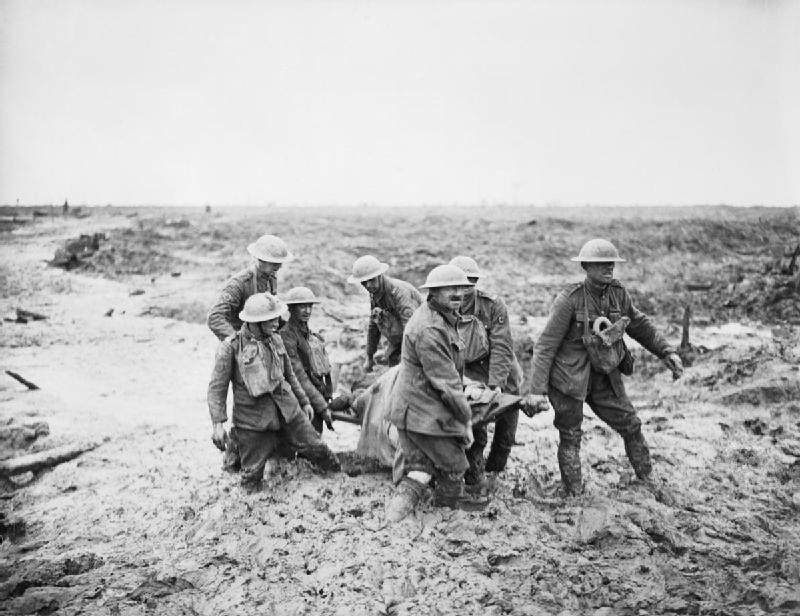
Albert John BRENT
Albert was born on October 27th 1874 to Peter and Mary Ann (nee Prior) Brent at St. Thomas Hamlet, Launceston. His father was a Farmer and General Labourer. Albert started his working life as a Brick makers Apprentice but in 1894 joined the D.C.L.I 3rd Battalion (Regimental No 2311). But on the 30th of March 1895, he was found to have been serving with the Royal Navy and was discharged. By the 1901 census, he is shown as serving with the Royal Navy aboard the Cruiser HMS ‘Undaunted’ as a stoker. Ten years later he is still single and serving aboard HMS Carnarvon. He was shown as being a leading seaman in the 1916 roll of honour and was serving as leading stoker upon HMS ‘Cupar’ when he was discharged on 4th November 1918. Exactly twelve months after his discharge, he died on November 4th 1919 at the County Lunatic Asylum, St Helens, Lancashire.
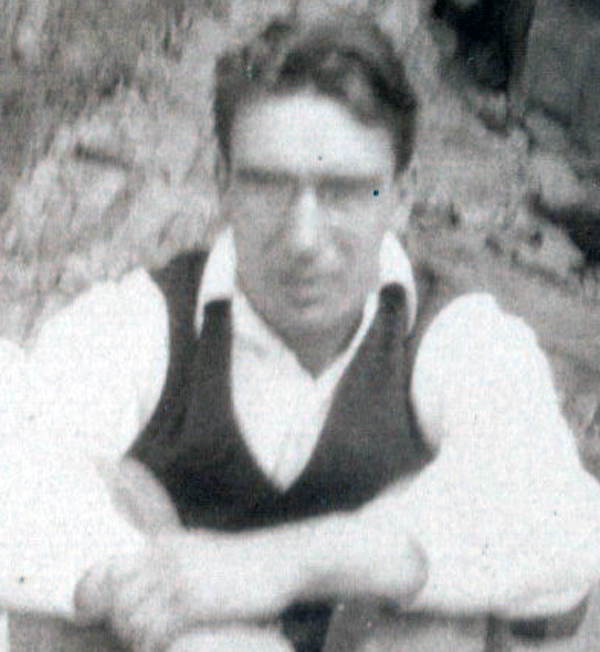
John was born in 1886 to William and Sarah (nee Harvey) Bridgeman at Launceston. His Father was a Stone Mason and the family (John was the eldest of 4 Children Louise, William, Irene and another) lived at Northernhaye Place, Tower Street, Launceston. By 1911 John was working as a General Labourer. He enlisted at Exeter with the Devonshire Regiment (Regimental No. 16299) finally reaching the Rank of Lance Corporal with the 2nd Battalion. He arrived in France on 11 October 1915 and died of his wounds at the 25th General Hospital at Hardelot on 18 January 1917, aged 31. At the time of his death, he was listed as living at Christow, Devon.
He is buried in the Neufchatel-Hardelot (Neufchatel) Churchyard (below), Neufchatel-Hardelot, Departement du Pas-de-Calais, Nord-Pas-de-Calais, France, Plot: 18. He was awarded the Victory Medal, and the British War Medal. He is commemorated on the Launceston War Memorial.
Fred Harvey Longman BRIGHTON
Fred was born in 1890 at 4 Devon View, Launceston to Truman and Agnes Brighton. The youngest of eight sons, six of whom served in the war with only two surviving. Truman Brighton was an auctioneer but died on the 17th April 1900 leaving the sum of £368 19s 8d to Agnes. Fred moved to London with his brother Richard and they both worked for Cooks, 16 Stamford Street, Southwark as a wholesale Manchester warehouseman.
Fred joined the 10th Royal Fusiliers (City of London Regiment) as Lance Corporal (Regimental No. Sth/920) and was killed in action serving with the 10th Battalion on the 23rd April 1917. He is buried at Chili Trench Cemetery, Gavrelle and is commemorated on the Launceston War Memorial and St. Stephens Church Roll of Honour.
Taken from the Battalion’s war diary:
21 April 1917 – Battalion moved via Athies to trenches. Two Companies in front line approx between points H II.b.68 and H 5 b.4.5. One company in support approx between points H II, a. 88 and H 5a.88, in position at 11.30pm. Several patrols sent out to reconnoitre and try to connect with other brigades. (At this point the Battalion was situated behind Cuba Trench close to Chili Trench.) Battalion occupied Cuba Trench at about 9.30 am on 23 April 1917.
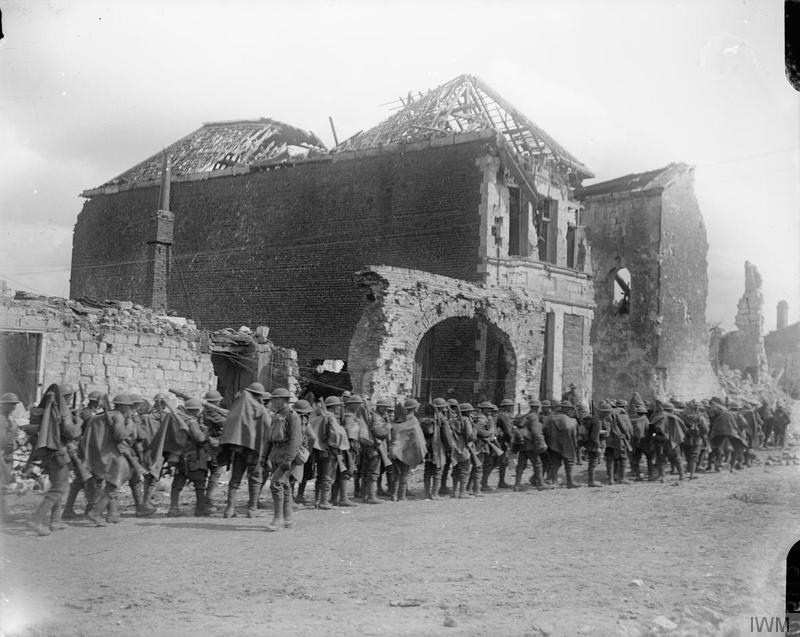
Richard BRIGHTON
Another of Truman and Agnes Brighton’s Sons, Richard was born in 1884 at Werrington which was in the county of Devon at the time. He first started working as a Draper but on moving to London worked for Cooks, 16 Stamford Street, Southwark as a wholesale Manchester warehouseman along with his brother Fred. By the outbreak of War, Richard had married Annie Victoria Brighton and was living at 4, Brockenhurst Rd., Addiscombe, Croydon. He first joined the East Kent Regiment (Regimental No. 5453) but transferred to the Cheshire Regiment ‘D’ Company 11th Battalion (Regimental No. 243050) He was killed in action on the 20th of April 1918. He was interred in the Strand Military Cemetery, Hainaut, Belgium VII. O. 5. and is also commemorated on the Launceston War Memorial and St. Stephens Church Roll of Honour.
The 20th of April was described in the Battalion War Diary as being quiet and the men were in camp on the road between Mont-des-Cats and Godersvelde. It is, of course, possible that in the chaos of the preceding days, many men had been attached to another unit and were killed in further fighting.
Truman BRIGHTON
Another Son of Truman senior and Agnes Brighton to perish, Truman was born in 1878 at a Cottage in Newport, Launceston. By the 1911 census, he was living at 109 Haviland Road, Boscombe, Bournemouth and working as a Builders Merchant assistant which he was still occupied at the time of his enlistment in 1915. He was living with his wife Elizabeth (Nee Harris, whom he married in 1911) at 29 Wheaton Road, Bournemouth at that time they had two daughters, Nora and Kathleen. He joined the Royal Garrison Artillery (Regimental No. 107816) on the 10th of December 1915. He served as a Gunner with the 336 Siege Battery, receiving two separate postings with the B.E.F in France. On the 29th of June 1918, he was gassed and was evacuated to No. 39 Stationary Hospital before being invalided back to England on the 17th of August 1918. On the 4th of February 1919, he was officially demobbed but never recovered from his injuries and died in March 1920 at Christchurch, Hampshire. He was interred in the Bournemouth East Cemetery, R. 2. 167. and is also commemorated on the Launceston War Memorial and St. Stephens Church Roll of Honour.
Thomas Stanley BRIGHTON
Thomas, the fourth son of the late Truman and Agnes Brighton to fall, was born in 1881 at St. Stephens, Launceston. At the age of 20, he was working as a printer’s apprentice still living with his widowed mother, but a further 10 years on he had moved to 53 Mill Hill Rd, Norwich and his occupation was listed as a compositor. It is from here that he joined the Norfolk Regiment 1/4th Battalion (Regimental No 200634). He was killed in action on the 19th of April 1917 during the 2nd battle of Gaza in Palestine. He is buried at Jerusalem Memorial, Jerusalem, Yerushalayim, Israel, Plot: Panels 12 to 15 and is also commemorated on the Launceston War Memorial and St. Stephens Church Roll of Honour.
At the outbreak of the First World War, Palestine (now Israel) was part of the Turkish Empire and it was not entered by Allied forces until December 1916. The advance to Jerusalem took a further year, but from 1914 to December 1917, about 250 Commonwealth prisoners of war were buried in the German and Anglo-German cemeteries of the city.
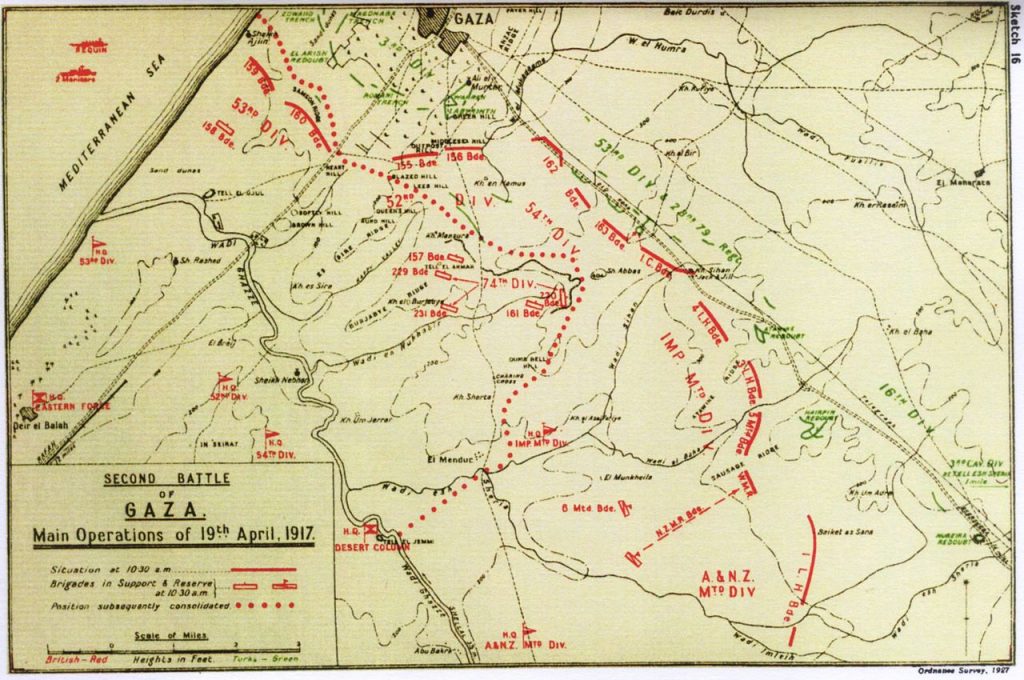
Thomas was born in April 1899 to William and Mary Ann Brown at Launceston. On enlisting at Launceston with the Princess Charlotte of Wales’s (Royal Berkshire Regiment) (Regimental No. 38738), he went on to serve with 2/4th Battalion as a Private. He was reported as missing on May 11th, 1918, but is listed as having died in France on November 14th, 1918, just 3 days after the armistice. He is buried at the Niederzwehren Cemetery, Germany. He is commemorated on the Launceston War Memorial.
Charles Henry Russell BUCHAN
Charles was born at Stoke Damerell in 1891 to William and Helen (nee Andrews) Buchan. His Father was a Steam Engine Fitter. On leaving school he became a Carpenter’s apprentice whilst still living with his parents at Devonport, Plymouth in 1911. He married Beatrice Trethewey at Tavistock in 1912 but had moved into the Launceston area to live. They had two sons, Denis Stanley Buchan and William James Russell Buchan.
He enlisted with the Duke of Cornwall’s Light Infantry 1/4th Battalion at Launceston, which is his only recorded connection with the town. (Regimental No 4545). He died of his wounds sustained in battle at Mesopotamia on October 27th, 1915. He is buried at Amara War Cemetery, Al `Amarah, Maysan, Iraq Plot: I. A. 4. He is commemorated on the Launceston War Memorial.
Douglas Ophia Edward Gordon CAVEY
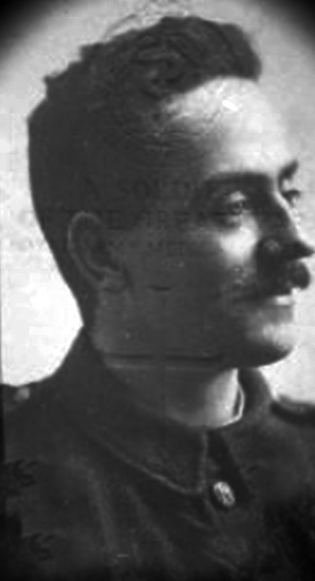
Douglas was born in 1890 at Race Hill, Launceston to William and Emma Cavey. His Father was the Caretaker at the Launceston Telephone Co. in 1911. In 1912 he married Gertrude Rice. He was working for Doctor’s Thompson, Gibson and Budd as a Dispenser prior to enlisting in the Royal Army Medical Corps (Regimental No 8224) in August 1914 at Devonport. He was a sergeant with the 9th Field Ambulance with the Guards Division when he was struck by shrapnel from a nearby shell burst whilst helping to clear battlefield causalities in France on August 30th, 1917. He died of his wounds the same day. He was interred at Canada Farm Cemetery, Elverdinghe, Belgium, II. G. 14. He is commemorated on the Launceston War Memorial and the Wesleyan Roll of Honour. He left a widow Mrs Gertrude Kate (nee Rice) Cavey of 5 Race Hill Terrace, Launceston. More
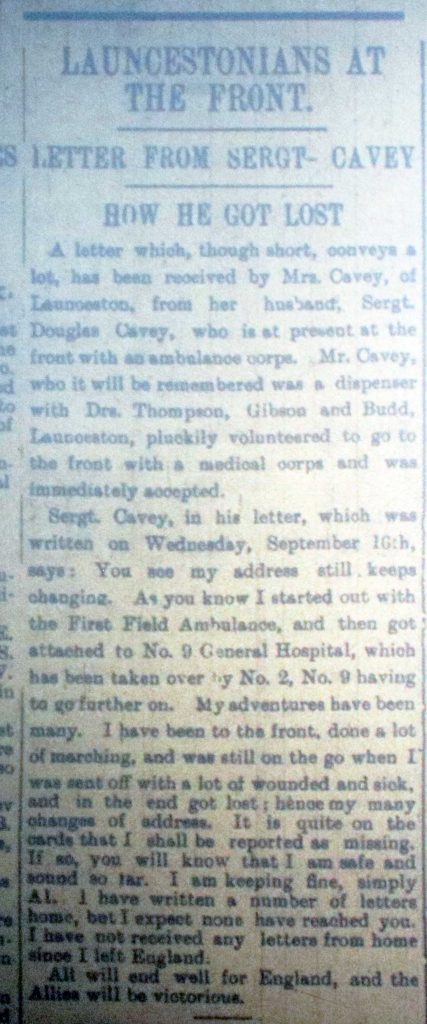
Writing to Douglas’s wife Gertrude on September 18th, 1917, A. J. Boyd had this to say:-
“Yesterday I managed to find the old Unit and saw the action spot where poor Doug was killed. It was a half round splinter-proof ‘dug out’ built of thick corrugated iron and protected with sand-bags. It was being used as a dressing room. At the moment of the catastrophe, Doug was inside with two other R.A.B.C. men and a badly wounded patient (on a stretcher). A large H.E. shell penetrated the roof and exploded inside the shelter. The other three occupants were killed outright but Doug, although very badly wounded and quite unconcious, was alive. The shelling continued for some time. Doug was immediately attended to and taken on a stretcher to the main road and put into a motor ambulance and taken out of the danger zone to the big hospital. He passed away soon after reaching there.”
The Field Ambulance was a mobile front line medical unit (it was not a vehicle), manned by troops of the Royal Army Medical Corps. Most Field Ambulances came under command of a Division, and each had special responsibility for the care of casualties of one of the Brigades of the Division. The theoretical capacity of the Field Ambulance was 150 casualties, but in battle many would need to deal with very much greater numbers. The Field Ambulance was responsible for establishing and operating a number of points along the casualty evacuation chain, from the Bearer Relay Posts which were up to 600 yards behind the Regimental Aid Posts in the front line, taking casualties rearwards through an Advanced Dressing Station (ADS) to the Main Dressing Station (MDS). It also provided a Walking Wounded Collecting Station, as well as various rest areas and local sick rooms. The Field Ambulances would usually establish 1 ADS per Brigade, and 1 MDS for the Division.
Frank Bate CLARKE
Frank was born in 1896 the only child of Florence Rosina Clarke who was a Dressmaker working from Madford Lane, Launceston. By the age of 14, Frank was working as a Stationers Errand Boy living at home with his Mother and Grandmother at Southgate Place, Launceston. At the outbreak of war, he was working for Treleaven’s outfitters in Southgate Street.
He was a Lance Corporal with the DCLI 1/4th Battalion (Regimental No 201337) and left England for India in October of 1914 serving there for 14 months before being transferred to Aden. He was then transferred to Egypt in February 1917 and whilst serving in Egypt that he contracted and died of Malaria on the 3rd April 1917. He is buried at the Kantara War Memorial Cemetery, El-Qantarah el-Sharqiyya, Al Isma’iliyah, Egypt, Plot: C. 48. He is commemorated on the Launceston War Memorial.
Lewis COLE
Lewis was born in 1896 to Thomas and Mary Ellen ‘Nellie’ Cole at Stoke Climsland, near Callington. His Father was a House Painter and by the 1901 census had moved his family to Bush Park, Launceston. Lewis was artistic in nature and has a long association with the Launceston science and art school. In 1911 the family is living at 5 Garcia Terrace Launceston and Lewis having left school was working as an Architect’s Clerk with Messrs Wise and Wise in Launceston. Having served his time with Wise and Wise he moved to Wales to take up a position as an Architect. He enlisted as a Private with the Glamorganshire Yeomanry in Cardiff (Regimental No. 3051) but later transferred to the Royal Welsh Fusiliers 9th Battalion (Regimental No 75300). He was killed in action after a piece of shell struck him after it exploded near his dugout on the 18th of April 1918 in France. The German spring offensive that opened in March 1918 destroyed much of the Fifth Army of which the 9th Battalion was part. In the initial stages, the 9th Battalion suffered over 450 casualties. Lewis’s body was never recovered but he is commemorated on the Launceston War Memorial and also the TYNE COT MEMORIAL Panel 63 to 65.
Cecil COOMBE
Cecil was born in 1883 at Kensey Cottages, Launceston to Thomas and Ann Coombe. His Father was a Millwright. By 1901 the family had moved to Carlton House, Newport, Launceston and Cecil was working as a Gardener. In January 1911 he married Ivy Lane and they moved to Abbotsfield Cottage Lodge, Courtfield Rd, Mutley, Plymouth, where Cecil continued his trade as a Gardener. Cecil at first joined the Devon Regiment (Regimental No 315697) but was transferred to the Princess Charlotte Of Wales’s (Royal Berkshire Regiment) as a Private (Regimental No. 220226) serving with the 6th Battalion. He was killed in action in Belgium on the 31st July 1917, the first day of The Third Battle of Ypres. His body was never identified but his name is commemorated on the Launceston War Memorial and the Ypres (Menin Gate) Memorial, Ypres (Ieper), West Flanders (West-Vlaanderen), Belgium.
Regiment War Diary entry for 31st July, 1917.
1.55AM – Head of Bn arrived in assembly area in I.17d and I.23a & c. 3.5 – Bn reported present in assembly area. Message sent to Bde HQ to this effect. 3.50 – Zero hour. 5AM Bde report Blue line captured. 5.50 – Patrols under 2/Lts HR Hooper and GH Tigar sent forward to get in touch with 17th Manchesters 6.50AM. Black line reported captured unofficially. 7.15 – Bn moved from assembly area in Artillery formation towards forming up line. 8.30 – Bn passing through SANCTUARY WOOD in I.13c. Fairly heavy MG fire & artillery barrage directed against Bn. No Manchester met up to this point and captured trenches did not appear to be garrisoned. 8.45 – JACKDAW RES TR reached. Owing to MG fire from YPRES-MENIN Rd and SURBITON VILLAS Bn deployed to extended order. Advance resumed and the line of the YPRES-MENIN road made good. 9AM – Attack on the black line determined on and commenced by rushes under cover of rifle & MG fire. Suffolks and their attd TM co-operated with fire on SP at J14a3.21/2. 9.50 – In spite of strong opposition and without assistance from our own Artillery which was unaware of the situation the line Xrds J7d91 JARGON SWITCH and SURBITON VILLAS captured. Touch gained with Lincolns at bank in J7d. 10.10 – British barrage opened behind the line of resistance holding up the Bn. Efforts to advance were stopped by rifle & MG fire from the JARGON TR LINE. 10.30 – Consolidation of the line J7d9.4 – Xrds J7d9.1 – JARGON SWITCH – J13b9.6 – junction rds at J13b9.5 – E of SURBITON VILLA where touch was gained with the SUFFOLKS. The work of consolidation was difficult owing to hostile MG fire & aeroplanes dropping bombs on troops consolidating. 3pm – Enemy seen massing for counter attack in GLENCORSE WOOD. SOS barrage called for – Artillery open fire and attack did not materialize. Remainder of day fairly quiet but enemy kept up continuous shell fire on consolidated troops & Bn HQ on YPRES MENIN Rd in the tunnel at J13b3.1. 8.30pm – Orders for relief by 17th KLR received. Details arranged direct with Bn – Relief orders attached. 12MN – Relief commenced. Completed 2.50AM Aug 1st. Bn withdrew to DICKEBUSCH. Narrative of operations & copies of messages attached. Detail of casualties attached. STATEMENT OF CASUALTIES JULY 17 OFFICERS Capt AH HUDSON killed Lieut HS TINDALL killed 2/Lt HGN TARRANT MC killed 2/Lt HR HOOPER wounded ” WD REES wounded ” EHG WORDEN wounded ” WH WOOD wounded ” AA BARRETT wounded OTHER RANKS killed 35 Died of wounds 6 Wounded & Missing 1 Wounded 177 Missing 27 TOTAL 246
Ernest COUCH
Ernest was born in 1865 to Frederick and Amelia Couch at Southgate Street, Launceston. He was one of 7 Children. He followed into his Father’s Tailor business taking over when his Father passed away before the 1901 census. In 1911 he is found living on his own in Madford Lane, Launceston and still working as a Tailor.
Ernest served with the Royal Defense Corps as a Private (Regimental No. 8409) having enlisted on the 28th of September 1914. Due to illness, he was discharged from service on the 24th of September 1918 (392. xvi King’s Regulation Sick). He died on the 10th August 1919. He was the Husband of L. B. Couch, Woodview, Plymouth Road, Buckfastleigh, Devon. He was interred at Launceston Cemetery. His name is commemorated on the Launceston War Memorial.
Archibald CUDLIPP
Archie was born in 1892 in Launceston to Charles and Mary Jane (nee Gilbert) Cudlipp. His Father was a Wheelwright and worked from Northgate Street. Archie took up General Labouring as a living. He joined the Devonshire Regiment 10th (Service) Battalion as a Private (Regimental No 20819), enlisting at Newton Abbott. He was killed in action whilst fighting in the Balkans on the 10th February 1917. His final resting place is unknown but he is commemorated on the Doiran Memorial, Doirani, Regional unit of Kilkis, Central Macedonia, Greece and the the Launceston War Memorial. His Father also served during the war with the Royal Defence Corps. (Regimental No. 11278) 252nd Protection Company. Archie’s Uncle was the William Cudlipp who ran the London Inn in Church street and who with his wife Emma had 22 children.
To invade and neutralise Bulgaria the Allies would have to breach the Bulgar front line. On the night of 10th February 1917 the 10th attempted this by launching an unsuccessful raid on Petit Couronne, perched high above a rocky ravine. Meeting fierce resistance, running out of ammunition and having lost 150 casualties, including Archibald, they were forced to withdraw. They had taken thirty prisoners and inflicted heavier casualties on the Bulgarians, but the position remained untaken. Two months later the attack on Petit Couronne was renewed from a different angle. A gap was blown in the enemy wire and the Devons stormed through but they were the only British troops to have taken and held part of the enemy front line. Again, they were ordered to retreat. This time the Devons’ losses among the 650 men who had attacked Petit Couronne were 450 killed, wounded or missing.
The rest of 1917 and the spring and summer of 1918 were spent holding part of the front line and patrolling, awaiting an Allied offensive which finally began on 14th September 1918.
Private Francis Mullins, 10th Devonshire Regiment:
Our guns had been blasting away all day blowing up the barbed wire and the front line trenches. As soon as it got dark we moved out of our trenches and down one side of the hill to get in the lower end of Jumeaux Ravine, ‘Johnny’ knew we were on the move and our route – they gave us a right pasting. We soon had many casualties. They seemed to know our every move. We got so far in the ravine and then it was hell let loose. Our lads were being knocked over like ninepins. We that were able, got about halfway, the noise of the explosions was terrific. Suddenly I found myself alone. We had to walk behind each other as it was not very wide. My mates behind and in front were knocked out, one poor chap was calling out for his mother, I was nearly choked with cordite fumes, but I was unhurt, not even blown over and my bag of bombs was untouched. I had to go on. I picked my way over the bodies, I could only see by the flash of the explosions.
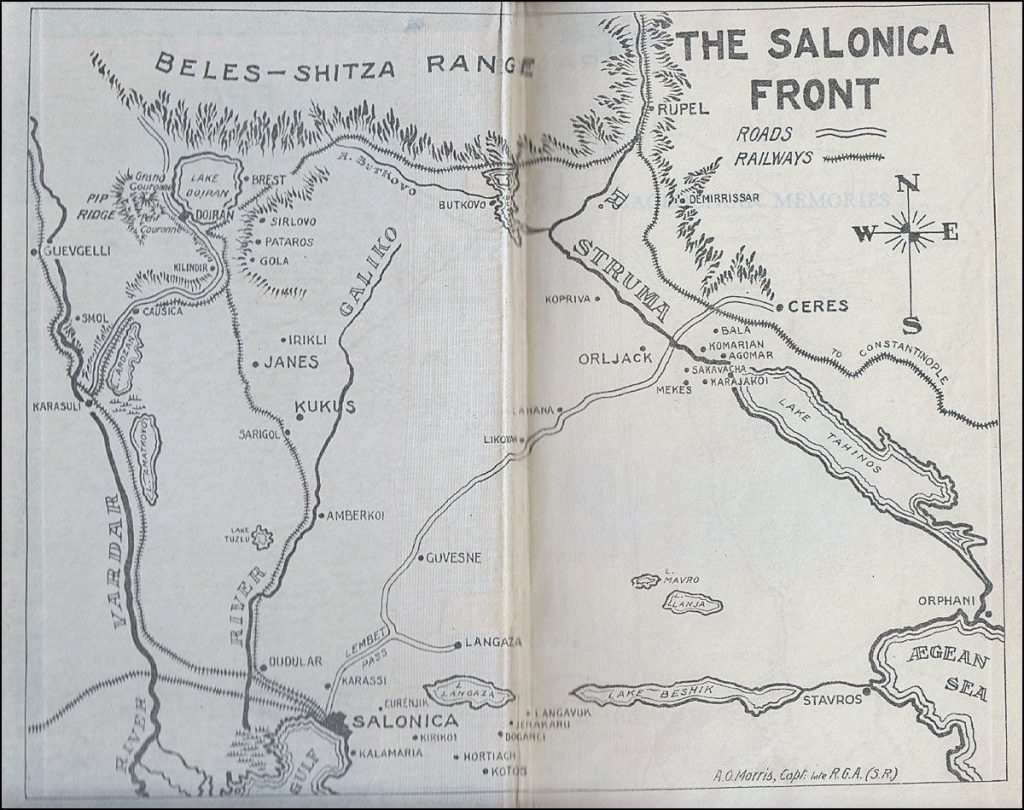
Charles DAVEY
Charles was born in 1892 at North Street, St. Stephens, Launceston to John and Caroline Davey. John Davey was a Coal Barker. In the 1911 census Charles is still living with his parents and working as a Domestic Groom. He joined the Devonshire Regiment 8th Battalion as a Private (Regimental No 45674). He was injured whilst fighting in France and died of his wounds on the 10th April 1917. He was interred at the Etaples Military Cememtery, Pas de Calais, France, XXII. F. 14A he is also commemorated on the Launceston War Memorial and St. Stephens Church Roll of Honour..
With the German retreat to the Hindenburgh line in mid March 1917, the Allied patrols having discovered the German withdrawal began to follow with their armies. 91st Brigade and 20th Brigade attacked on 2nd April, 91st Brigade, 2nd Queen’s (Royal West Surrey Regiment), 21st Manchester Regiment and 1st South Staffordshire Regiment captured Croisilles and 20th Brigade, 2nd Gordon Highlanders, 8th Devonshire Regiment, of which Charles was a member, and 9th Devonshire Regiment, captured the two Ecoust villages.
Frank DOIDGE
Frank was born in 1894 at Hanalls Cottage, Wennington, Essex to Samuel and Mary Doidge. By the 1911 census he is living and working for his Uncle, John Tinney as a Stone Mason in Launceston. He married Mary Fanny Doidge before he enlisted with the 1st Devonshire Regiment as a Private (Regimental No 30656). He died on the 23rd of April 1917 during the Battles Of Arras. His body was never recovered but his name is commemorated on the Launceston War Memorial and the ARRAS MEMORIAL Bay 4.
Relieving 4th Canadian Division after their capture of Givenchy-en-Gohelle, 5th Division continued the advance towards Avion until they were halted by a strongly fortified defensive line between the Cite du Bois Moyen Electricity Works and La Coulotte, on the outskirts of Avion. At 04.45am on 23th April, 95th Infantry Brigade and 15th Infantry Brigade launched their attack on this fortification.
Advancing under a creeping barrage provided by the Reserve Division Artillery (formerly Lahore Division Artillery) 95th Infantry Brigade were on the left, 1st Devonshire Regiment and 1st Duke of Cornwall’s Light Infantry the lead battalions, supported by 16th Warwickshire Regiment, 15th Infantry Brigade on the right, 1st Norfolk Regiment and 1st Bedfordshire Regiment the lead battalions. Coming up against uncut wire, only a few small parties made it through, the rest being halted by heavy machine-gun fire from the untouched concrete emplacements.
Fighting going on through most of the day, by 15.00pm the last of the advance parties had returned to the British lines. The Division suffering 1629 casualties in the failed attack.
Stanley DOIDGE
Stanley was born in 1897 to Richard and Elizabeth Doidge at 40, St. Thomas Road, Launceston. His Father was a Newsagent a trade that Stanley followed into. He joined the Royal Army MedicalCorps on the 8th November 1915 as a Private (No 80912). He served as an ambulance driver in France from the 26th July 1916 till his death of pneumonia on the 28th October 1918 and is buried at the Duisans British Cemetery, Duisans, Departementdu Pas-de-Calais, Nord-Pas-de-Calais, France, Plot VIII. B. 43. His name is commemorated on the Launceston War Memorial and the Wesleyan Roll of Honour.
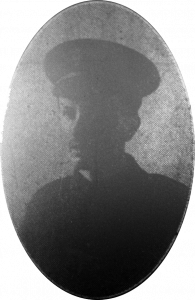
Ernest was born in 1892 to Charles and Esther Eveleigh at Western Villas, Launceston. His Father was a Wholesale Stationer. He had 6 siblings. He was educated at Dunheved College and was a member of the Castle Street Church being a Sunday School Teacher for many years. On leaving school he joined his Fathers business as an assistant before taking up a position working in the City of London in 1914. It was on his way home for two week’s leave, in 1915, that he came upon a recruitment centre and realising that many men were already fighting, decided to enlist there and then with the 1st London Regiment as a Private (Regimental No. 4587). He was instantly killed whilst on sentry duty in his companies trench by a shell that exploded near him on the evening of the 16th of July 1916 near the Somme Battlefield in Northern France. He was interred at the Foncquevillers Military Cemetery, Plot 1, Row C, Grave 4. His name is commemorated on the Dunheved College and Launceston War Memorial’s.
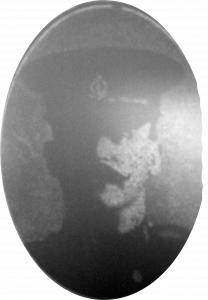
James was born in 1877 to William and Emma Fitze at 16 Duke Street, St. Stephens, Launceston. He had 3 elder Brothers and two elder Sisters. His Father was an agricultural worker. In the 1901 census he is working as a Boots Domestic at the Farley’s Hotel, Plymouth but before 1902 he had already joined up with the Royal Army Medical Corps (Regimental No 15804) serving in South Africa during the Boer War. On one occasion he was taken prisoner. He spent a total of 5 years in South Africa. In the 1911 census he is shown as a cook being stationed at the Military Hospital, Fulford Road, York working in the isolation block.
By the time war had broken out, he had been promoted to the rank of Sergeant. He was serving at the 5th casualty clearing station on the 4th September 1914 when killed. He is buried at the Saint Sever Cemetery Extension, Rouen, Departement de la Seine-Maritime, Haute-Normandie, France, Plot: S. 1V. L. 6. His name is also commemorated on the Launceston War Memorial and St. Stephens Church Roll of Honour.

Lawrence was born in 1888 to John and Jeanie Geake at St. Stephens, Launceston. His Father was a Mineral Water Manufacturer. He attended Shebbear College. He became a Gardener and in the 1911 census is shown as a visitor to Mr. Frederick Lintern, Little Rexon, Broadwood along with his wife Jessie and new born son Edward. He joined the 8th Battalion Devonshire regiment in 1914 as a Private (Regimental No 10200) enlisting at Plymouth.
Like so many in the 8th (including two other Lanson Lads) he perished on the Loos Battlefield on the 25th September 1915. His body was never recovered but his name is commemorated on the Launceston War Memorial, St. Stephens Church Roll of Honour and the Loos Memorial Loos Memorial Panel 35 to 37.
The Battle of Loos was the first genuinely large scale British offensive action but once again only in a supporting role to a larger French attack in the Third Battle of Artois. British appeals that the ground over which they were being called upon to advance was wholly unsuitable were rejected. The battle is historically noteworthy for the first British use of poison gas. Compared with the small-scale British efforts of spring 1915, this attack of six Divisions was a mighty offensive indeed – so much so that it was referred to at the time as ‘The Big Push’. Taking place on ground not of their choosing and before stocks of ammunition and heavy artillery were sufficient, the opening of the battle was noteworthy for the first use of poison gas by the British Army. Despite heavy casualties, there was considerable success on the first day in breaking into the deep enemy positions near Loos and Hulluch. But the reserves had been held too far from the battle front to be able to exploit the successes and succeeding days bogged down into attritional warfare for minor gains. When it was fought it was the largest land battle in British military history, witnessing the first British use of poison chlorine gas (in bulky cylinders placed in the front line), and the debut of elements of Lord Kitchener’s New Army (composed of citizen volunteers), which had been raised after the outbreak of war. It was also the first time the British experienced the huge cost of major continental campaigns, suffering over 60,000 casualties in little over three weeks – with, on average, British divisions suffering a higher number of men killed in action than would be seen on the infamous 1 July 1916, ‘the first day on the Somme’. Yet this remains largely unknown.
William John GIMBLETT
William was born in 1892 to William and Mary Gimblett at St. Stephens, Launceston. His Father was an Agricultural Worker but died in 1894. In 1911 he was working at High Hall Farm, Laneast for Mr. Whitford as a Carter.
He first joined the Duke of Cornwall’s Light Infantry as Private 15599, but later transferred to the Somerset Light Infantry 8th Battalion as Private (Regimental No. 15177) as part of the 63rd Brigade.
He died (His left arm had been badly shattered and had been amputated) of his wounds sustained in battle of the Somme – (Battle of Albert) on the 6th July 1916 and is buried at the Le Treport Military Cemetery , Le Treport, Departement de la Seine-Maritime, Haute-Normandie, France, Plot: Plot 2. Row O. Grave 2A. His name is also commemorated on the Launceston War Memorial and St. Stephens Church Roll of Honour.
Walter GRAY
Walter was born on the 2nd of September 1889 at Dilton Marsh, Westbury, Wiltshire to John and Evelina Gray one of eleven children. His Father was a general Labourer. Walter enlisted with the Royal Marine Light Infantry (Service No. PLY/14099) originally on the 7th of September 1907 and was discharged by purchase in March of 1914 when he joined the Cornwall Constabulary (PC211) and was stationed at Launceston. He and his wife Islet lived at Hill Park, Launceston. He enrolled with the Royal Navy fleet reserve and as such his Police career was cut very short with the outbreak of war in August 1914. In the war he was serving with the 188th Brigade Trench Mortar Battery as a Lance Corporal. He was killed by an accidental explosion on the 4th of August 1916 near Arras, France. His name is commemorated on the Arras memorial as well as the Bodmin, Launceston, Stratton and Cornwall Constabulary memorials. He is buried at an isolated Grave about 1 1/2 Miles East of Aix Noulette and 3 1/4 Miles West of Lens.
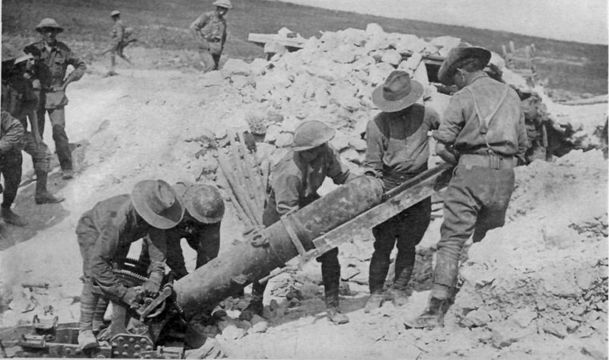
Trench mortars were used in a variety of defensive and offensive roles, from the suppression of an enemy machine-gun, sniper post or other local feature, to the coordinated firing of barrages. Larger mortars were sometimes used for cutting barbed wire, especially where field artillery could not be used, either because of the danger of hitting British troops or where the effect of the fire could not be observed. Experience on the Somme revealed that use of Stokes mortars in an offensive close-support role had been limited by the reluctance of some commanders to sacrifice rifle strength to provide parties required to carry the ammunition which the weapons so quickly consumed.
Benjamin HARDY
Benjamin was born in 1885 to Benjamin and Sarah Hardy in Hampshire. His Father was the Headmaster for Dunheved College from 1896 to 1929. Benjamin married Elizabeth and lived at no 6, Bolan Street, Bridge Road, Battersea, London, at the time of his death in 1918. He enlisted at Woolwich with the East Kent Regiment (Regimental No 4621) but later transferred to the Machine Gun Corps (Infantry) (Regimental No. 14643) serving with the 18th Battalion. He died of his wounds on the 25th of April 1918 sustained in fighting, possibly during the Second Battle of Bapaume. He is interred at the St. Acheul French National Cemetery, Amiens. His name is commemorated on the Dunheved College and Launceston War Memorial’s and the Wesleyan Roll of Honour. His brother Herbert, also served during the war with the South African Infantry and was taken prisoner also in the April of 1918, although he survived the war.
George Henry HILL
George was born in 1884 to Henry and Sarah Hill in Northgate Street, Launceston. His Father was a Chimney Sweep. George moved with his Mother to Harveys Lane, Launceston and was working as a Groucer/Storeman in 1901. George had married Mabel Woolridge in 1907 and by 1911 was living at Duntshill, Lifton, Devon, with their two children Cyril and Ivy. He was employed as a Motor Car Cleaner. At the time of his death the family were living at St. Ann’s Chapel, Callington.
He enlisted at Tavistock with the Devonshire regiment as a Private (Regimental No. 25793) and served with the 9th Battalion attached to the 1st Battalion. He was killed in action on the 4th January 1917. He was interred at the Gorre British and Indian Cemetery and he is commemorated on the Launceston War Memorial.
James HILL
James was born in 1887 to William John and Eliza Jane Hill at Tiverton. The family moved to Launceston residing at 1 Tower Street. On leaving school James worked as a Baker for Thomas Bailey at Tower Street, Launceston before joining the Royal Navy. He was a Cooks mate 2nd Class (Service No. M/14846) on HMS Indefatigable, when she was sunk at the Battle of Jutland on the 31st of May 1916. His name is he is commemorated on the Launceston War Memorial and the Plymouth Naval Memorial.
John was born in 1895 to John and Selina Hill at Carlow, Ireland. His Father was a Corporal with the 60th Rifles Regiment before retiring back to his birthplace of Launceston (2 Treloar Terrace Tredydan Road) to work at a Steam Laundry. His Mother, Selina was born in Carlow, Ireland.
On leaving school, John took up an apprenticeship at a Hardware Business in Launceston. In May of 1915 he married Fanny Frances Hunt at Alresford, Hampshire.
He originally enlisted with the Duke Of Cornwall’s Light Infantry (Regimental No 27179), but later transferred to the Dorset Regiment (Regimental No. 22342) 1st Battalion. He was killed in action in France on the 14th of June 1918. His body was never recovered but his name is commemorated on the Launceston War Memorial, The Wesleyan Roll of Honour and he is also remembered on the Carlow War Memorial, Ireland.

George was born in 1892 in Wynaad, Malabar, India to John Williams and Caroline Elizabeth Hockin. His planter parents settled in 13 Castle Street, Launceston, Cornwall. He attended Marlborough College and then the Royal Military Academy, Woolwich as a Gentleman Cadet, he was commissioned in the 7th Gurkha Rifles as a Lieutenant in 1911 serving with the 1st Battalion attached to the 2nd Battalion. George was Mentioned in despatches in late July 1915 after being wounded. He was killed in action on the 22nd of November 1915, aged 23, in action at Ctesiphon, Mesopotamia, in a charge on the Turkish trenches. His body was never recovered but he is commemorated on Basra, Iraq, memorial, panels 55 & 67 and the Launceston War Memorial.
Indian Expeditionary Force D, mostly made up of Indian units and under the command of Gen. Sir John Nixon, had met with success in Mesopotamia since landing at Al Faw upon the Ottoman Empire’s Declaration of War on November 5, 1914.
One of the primary reasons for initiating the campaign in Mesopotamia was to defend the oil refinery at Abadan at the mouth of the Shatt al-Arab. Adopting a forward defence policy, the British army under General Townshend fought off a series of small Ottoman forces. Then after a year of a string of defeats, the Ottoman forces were able to halt the British advance in two days of hard fighting at Ctesiphon.
Edwin HOWE
Edwin was born in 1892 to Henry and Annie Howe at Royal Marine District Depot, Deal, Kent. The Family first moved to Germansweek and then unto Launceston by 1911 residing at The Passmore Edwards Institute, St. Thomas Hill where Henry was the assistant Librarian and Caretaker whilst also being a Naval Pensioner (He had been a Drum Major with the Royal Marines). Edwin worked as a plumber. He joined the Navy and became a Plumbers Mate (Service No. M/5729) aboard HMS Indefatigable. He was Killed or died as a direct result of enemy action on the 31st May 1916 at the Battle of Jutland. His body was never recovered but his name is commemorated on a plaque at Plymouth Naval memorial and the Launceston War Memorial.
Indefatigable was sunk on 31 May 1916 during the Battle of Jutland, the largest naval battle of the war. Part of Vice-Admiral Sir David Beatty’s Battlecruiser Fleet, she was hit several times in the first minutes of the “Run to the South”, the opening phase of the battlecruiser action. Shells from the German battlecruiser Von der Tann caused an explosion ripping a hole in her hull, and a second explosion hurled large pieces of the ship 200 feet (60 m) in the air. Only two of the crew of 1,019 survived.
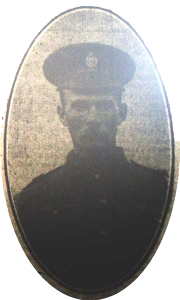
John was born in 1883 to Thomas and Amelia Hutchings at South Sydenham, Devon. His Father was a General Labourer. The family moved to North Petherwin, and in 1891 were living at Daws Cottage, North Petherwin. In 1909 he married Blanche Jane and they set up home at Tregoiffe, Linkinhorne where he worked as a Farm Labourer. The family were living at Hurdon, Launceston at the time of his death, although his wife was shown as living at South Battens, North Hill.
He first joined the Royal Veterinary Corps (A.V.C. 19884) in August, 1916, when he was stationed in Latham Park, Ormskirk, Lancashire. He was with the Veterinary Corps until May, 1917, when he went to France, but he was subsequently transferred to the Alexandra, Princess of Wales’s Own (Yorkshire Regiment) as a Private (Regimental No 33969) serving with” D” Company of the 13th Battalion. He was instantly killed when a shell exploded near a trench he was guarding on the 1st of January 1918 and was interred at the Mory Abbey Military Cemetery, Mory, Departement du Pas-de-Calais, Nord-Pas-de-Calais, France, Plot: II. A. 9. He is also commemorated on the Launceston, North Hill and North Petherwin war memorials.
Captain Brownleigh, R.A.M.C. wrote back to John’s wife:
‘Dear Mrs Hutchings, I regret that I am to be a bearer of bad news. Your husband, Pte. J. H. Hutchings, Yorkshire Regt., was hit by a fragment of shell early yesterday afternoon and killed instantaneously. He will be buried tomorrow in a military cemetery. I regret that I am not permitted to mention the name of the village, but if you write to ‘The Secretary, Graves Registration Committee, War Office, London,” details will be sent you. We are all exceedingly sorry to lose Pte. Hutchings. Although he had been with us only for a short time yet he had shown himself a willing and capable worker and a brave and cool soldier. With the most genuine and heartfelt sympathy for you in your great bereavement.’
Major Gerald Honey wrote:
‘Dear Mrs Hutchings, I expect before this you will have heard of the sad news that your husband has been killed in action. I know full well what a great and irreparable loss this will be to you and how little letters can comfort you. I do offer on behalf of the officers and men of the battalion our very deepest sympathy. Your husband had only been with us for a short time, but in that time he had proved himself a brave and gallant man. He is buried in an English cemetery together with tow of his comrades, but I am not allowed to state the name of the village. I do hope that the Healer Time will soften the blow that has fallen upon you and that in the years to come it will be with pride of living memory that you will recall the great sacrifice your gallant husband has made for the cause for which we are all fighting.’
Claude Samuel JONES
Claude was born one of eight children to Charles and Ellen Jones in 1888 at St. Thomas Road, Launceston. His Father was a Licensed Hawker. By 1901the family had moved to Wooda Road, Launceston and Claude was now working as an Errand Boy. He emigrated to Quebec, Canada on the 7th of July 1910, departing aboard the Royal Edward from Bristol. At that time he was listed as a Compositor. He served in the war as a Private in the Canadian Infantry 12th Battalion (Regimental No. 7753). He died on the 4th of July 1916 at Shorncliffe of a diabetic coma. He is buried at Launceston Cemetery and is also commemorated on the Launceston War Memorial.
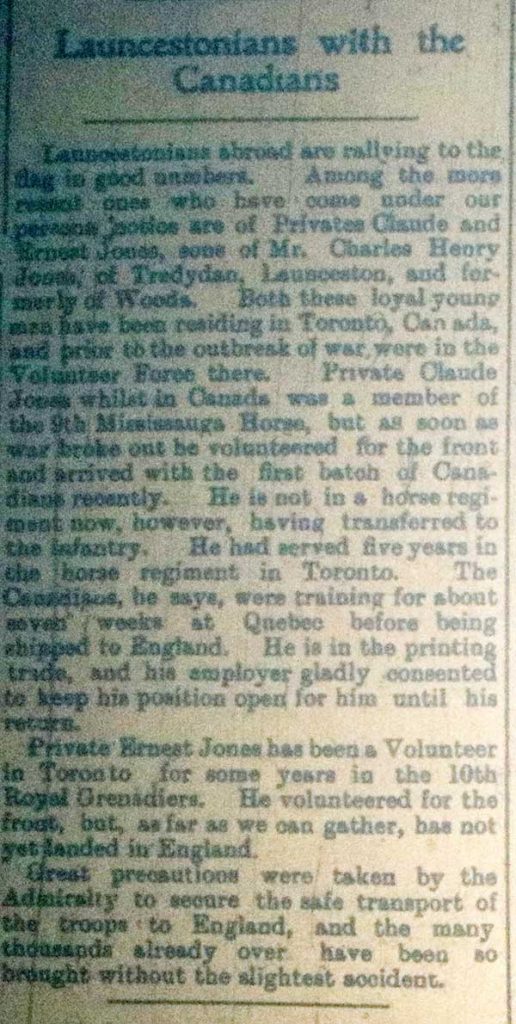
Ernest JONES
Ernest was born on the 6th of June 1887 to Charles and Ellen Jones at St. Thomas Road, Launceston. On leaving School Ernest worked first as an Errand Boy. He emigrated to Canada in the 1900’s probably along with his Brother Claude (See above). In 1915 he married Ada Mary Longman at Toronto, York, Ontario, Canada. They set up home at 208 George Street, Toronto with Ernest working as a bricklayer. Like his brother Claude, also served with the Canadian army enlisting in November 1914. On his enlistment form it stated that he had previously served with the D.C.L.I for 5 years. His regimental No was 404867 serving with
Canadian Infantry (New Brunswick Regiment) 44th Battalion. He was killed in action on the 3rd of June 1917 whilst attacking La Coulotte. He is buried at the Villers Station Military Cemetery, Villers-au-bois, France. He is also commemorated on the Launceston War Memorial.
At midnight on June 2nd-3rd 1917, after a gas bombardment of German positions, the 10th Brigade mounted an attack to capture sites along the Lens-Arras road. The 44th Battalion attacked La Coulotte and the brewery to the north; the 50th’s main task was to capture the power station. In heavy fighting both battalions achieved their objectives, but could not hold them. Before dawn on the June 3rd, the 44th Battalion had been forced back to its start line.
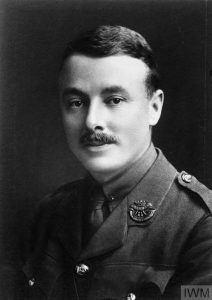
Douglas was born at Huelva, Spain on the 3rd of April 1884 to William and Eleanor Langdon of Kensey, St. Stephens, Launceston. He was educated at Ipswich Grammar School and in April 1900 began an apprenticeship at the works of Saxby and Farmer, Chippenham.
In 1903, he entered the service of the Great Western Railway as an improver for four years in their locomotive works at Newton Abbot, Devon and passed through the fitting, erecting, machine shops, and drawing office. During the period of his apprenticeship and subsequently, he attended Technical schools at Bath, Chippenham, and Newton Abbot. He was elected a Graduate of this Institution in 1908, and an Associate Member in 1911
In September 1907 he entered the service of the Buenos Aires and Pacific Railway in the drawing office at Junin, Argentina, and in the following February he was sent as assistant shed foreman to Villa Mercedes. Two years later he became assistant to the Divisional Locomotive Superintendent at Justo Dorset until the following January when he was promoted to take charge of the Company’s running shed at Beazley. On the outbreak of War in August 1914 he immediately applied for and obtained leave to go home, and on the day following his arrival in London he enlisted in A Company of the Public Schools and Universities Corps then just forming (afterwards 18th Batt. London Royal Fusiliers). He was offered a commission in the Duke of Cornwall’s Light Infantry in May 1915, and in September 1916 he was promoted to Acting Captain abroad. On March 22nd of the same year, he was sent out at night with a small party to repair the wire in front of their trenches and was hit below the knee by a rifle bullet from a sniper. After being in the Red Cross Hospital at Rouen for eight weeks he returned to his battalion at the front.
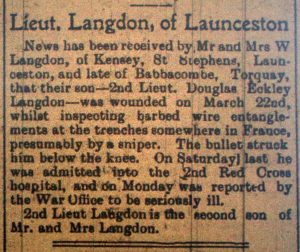
On the night of April 22nd-23rd, 1917 he took his Company into action and was killed instantly while clearing the enemy out of some ruined houses. In this action, all the officers of the Company were killed or wounded. He was thirty-three years of age. He is buried at the Sucrerie Cemetery, Ablain-Saint-Nazaire, Departement du Pas-de-Calais, Nord-Pas-de-Calais, France, Plot: I. A. 18. He is also commemorated on the Launceston War Memorial and St. Stephens Roll of Honour.
Frederick George T LETHBRIDGE
Frederick Lethbridge was born in 1880 in Plymouth to William and Rosetta Lethbridge. His Father was a Mineral Water Manufacturer. In the 1911 census he is living with his Wife Emma and one year old Son William (who went on to serve with the Royal Navy in WW2) at 1 Northern Haye Court, Launceston, and was employed as a Mason’s Labourer. What is not clear is that he joined the Royal Ordnance Corps in 1902 so it’s assumed that he served the regulated 3 years and was recalled from the reserve list on the outbreak of war. He was 5’3” tall. He eventually rose to the rank of Staff Sergeant (Regimental No 01429) serving with the 13th special Company. He died on the 14th of June 1919 whilst serving in Afghanistan. He is buried at the Bannu Cemetery, Pakistan and is also commemorated on the Delhi war memorial and also the Launceston War Memorial.
William Mervyn Johnes LLEWELLYN

William or Mervyn as he was known, was born on the 5th of May 1898 to Thomas Johnes Llewellyn and Ann Elizabeth Llewellyn in Westgate Street, Launceston. His Father, a Welshman, was a Solicitor and had moved to Launceston to become the Magistrates Clerk but by 1914 was the Mayor and Chairman of the Launceston Rural District Council. Mervyn attended Upcott House preparatory school, Okehampton, Devon and the from May 1913 to December 1916 he attended Sherborne School (School House); scholar; 6th form; Prefect; Head of School House; 2nd XV rugby football team.
After leaving Sherborne in 1917 he went to Sandhurst. He joined the South Wales Borderers 1st Battalion as a 2nd Lieutenant in December 1917, joining the 3rd Battalion and going to the 1st Battalion in France in April 1918. Slightly wounded in June 1918, but as his regiment was short of officers he remained at duty. On the 17th of August 1918 at Cambrai, he along with a Sergeant and Lance Corporal set of on a dangerous scouting mission in an attempt to gather intelligence enemy. It was in darkness that they set off, but unfortunately they were seen. Both Mervyn and the Sergeant were killed, with the Lance Corporal being taken prisoner.
Mervyn’s obituary appeared in ‘The Shirburnian’, February 1919:
‘2nd Lieut. William Mervyn Johnes Llewellin, South Wales Borderers (a 1913-16), who was reported missing in August, was killed instantaneously on August 17th, by a German bomb while on patrol with two soldiers. One of the two was killed also, and the other taken prisoner: the latter has now returned home and reported the facts. Mervyn Llewellin came to the School House in May 1913, having been delayed for two terms by serious illness. His school life was a splendid struggle against ill health and a remarkable victory. He would never admit to the slightest feeling of illness until he was absolutely compelled to do so, and insisted on doing everything in work and play that the healthiest boy could do whenever possible. Before he left he reached the Upper VIth, was head of the School House, and in the 2nd XV. On leaving school he went to Sandhurst in January, 1917, and was gazetted to the South Wales Borderers in December of that year, joining the 3rd Battalion and going to the 1st Battalion in France in April, 1918. He was slightly wounded in June, but, as the regiment was short of officers, he remained at duty.’
He is buried at the Saint Mary’s Advanced Dressing Station Cemetery, Haisnes, Departement du Pas-de-Calais, Nord-Pas-de-Calais, France, Plot: XI. F. 20. The same Cemetery as Rudyard Kipling’s Son John Kipling is buried. He is also commemorated on the Launceston War Memorial and St. Stephens Roll of Honour.
Herbert John LUKE
Herbert was born on the 18th April 1888 to John and Johanna Luke at Lane End Cottage, Washaway, Bodmin. His Father was a Navy Pensioner and Rural Postman. By the 1911 census, Herbert was a Police Constable with the Cornwall County Constabulary working at Camborne. It’s probable that between 1912 and 1914 he received a transfer to the Launceston area, although there is no documentation to prove that. He enlisted with the Military Police Corps in June 1915 as a Private (No 1522). He served with the Military Foot Police Battalion being attached to XV Corps HQ in France and Flanders. He married Gertrude Mary Phare at Launceston in 1916 whilst on leave, and they set up home at Tresmeer. He died on the 13th April 1918 at No. 23 Casualty Clearing Station, Etaples, of his wounds sustained in the Battle of the Lys and the Battle of Estaires two days previous during the German Spring Offensive. He is buried at the Lapugnoy Military Cemetery, Lapugnoy, Departement du Pas-de-Calais, Nord-Pas-de-Calais, France, Plot: IX. B. 14A. He is also commemorated on the Cornwall Constabulary memorial and also the Launceston War Memorial.
The Battle of the Lys from April 7th – 29th 1918, was part of the 1918 German offensive in Flanders during World War I, also known as the Spring Offensive. It was originally planned by General Ludendorff as Operation George but was reduced to Operation Georgette, with the objective of capturing Ypres, forcing the British forces back to the channel ports and out of the war. In planning, execution and effects, Georgette was similar to (although smaller than) Operation Michael, earlier in the Spring Offensive. On April 10th, German Fourth Army attacked north of Armentières with four divisions, against the British 19th Division. The Second Army had sent its reserves south to the First Army and the Germans broke through, advancing up to 3 kilometres (1.9 mi) on a 6 kilometres (3.7 mi) front, and capturing Messines. The 25th Division to the south, flanked on both sides, withdrew about 4 kilometres. By April 11th, the British situation was desperate; it was on this day that Haig issued his famous “backs to the wall” order. After initial successes the German attack was held after British and French reserves are somehow found and deployed.
Robert William Digory MADDEVER
Robert was born in 1893 to William and Margaret Maddever at 15 Duke Street, St. Stephens, Launceston. His Father was a General Carter (Timber Haulier). His Father died in 1911. He was educated at Horwell Boys Grammar School and Camelford Grammar School and went on to become a school teacher. According to reports he was a keen athlete being associated with Launceston Football, Cricket, Tennis and Bowling clubs. He first volunteered for active service with the Cornwall territorials on the 24th April 1915 and gained rapid promotion being made Quartermaster Sergeant on the 16th December 1915. He obtained a commission and was made 2nd Lieutenant of the Somersetshire Light Infantry 4th Battalion on the 20th of July 1917 with whom he fought with in France and Flanders from the 10th September 1917. He died near Ypres on the 22nd of October 1917 of wounds he received in action the same day during the Third Battle of Ypres. He is commemorated at the Tyne Cot Memorial, Zonnebeke, West Flanders (West-Vlaanderen), Belgium Panel 41 to 42 and 163A and also the Launceston War Memorial and St Stephens Roll of Honour. He left a widow in Margaret of 15, Duke St., St. Stephens, Launceston.
Samuel John MARKS
Samuel was born in 1897 to John and Mary Grace Marks at St.Stephens, Launceston. His Father was a Wood Ranger (Woodman). They moved to Hurdon Down in 1901 where the family settled. By 1911 Samuel was joined by 4 Brothers and 1 Sister. He was a scholar at Tower Street United Methodist Sunday School. He enlisted with Devonshire’s at first (3rd Devon Battalion 4th Wessex Brigade) at Tavistock in 1914 but had transferred to the Royal Field Artillery 28th Divisional Ammunition Column by 1916 as a Driver (Regimental No 1300). He was injured after an accident and died of his wounds on the 24th August 1916 at Salonika, Greece. He was interred in the Mirka British Cemetery, Kalamaria, 1666 and is also commemorated on the Launceston War Memorial, the Wesleyan Roll of Honour and Lewannick War Memorial.
Operated by the Royal Field Artillery, the Divisional Ammunition Column was responsible for transporting all the ammunition, both artillery and small arms, for the Division. The Divisional Ammunition Column collected ammunition from the Army Service Corps Divisional Ammunition Park for onward transportation to a re-filling point where it could be transferred to a Brigade Ammunition Column. When during 1916 Brigade Ammunition Columns were dispensed with the Divisional Ammunition Column became responsible for transporting the ammunition to a re-filling point where it could be collected by ammunition wagons belonging to the individual batteries. At any one time, a Divisional Ammunition Column, together with the tactical units of the Division held one scale (the designated allocation of ammunition for the division). A second scale of ammunition was stored in the Divisional Ammunition Park whilst a third scale was stored in the Ordnance Depot. A Divisional Ammunition Column comprised 4 Sections, namely, No’s 1, 2 and 3 Sections which handled 18-pounder and small-arms ammunition, and No 4 Section which had a “Howitzer portion” for 4.5-inch and a “Heavy Portion” for 60-pounder ammunition. The latter portion was removed from the establishment in early in 1915 when the 60-pdr guns were withdrawn from divisions.
With knowledge that Romania was about to join the Allied side, General Sarrail began preparations for an attack on the Bulgarian armies facing his forces. The Germans made plans of their own for a “spoiling attack”. The German offensive was launched on August 17th, just three days before the French offensive was scheduled to start. In reality, this was a Bulgarian offensive, as the Austro-Hungarian Army was in Albania and only one German division was on the Greek border. The Bulgarians attacked on two fronts. In the east, they easily conquered all Greek territory east of the river Struma (see Struma Offensive), since the Greek Army was ordered not to resist by the pro-German King Constantine. In the west, where Samuel was positioned, the attack achieved early success thanks to surprise but the Allied forces held a defensive line after two weeks. Having halted the Bulgarian offensive, the Allies staged a counter-attack starting on September 12th (Battle of Kaymakchalan)
William Earle MARTIN
William was born in 1880 at Wishworthy, Lawhitton, Launceston to John and Elizabeth Martin (Martyn). His father was a farmer who he had died prior to 1901 possibly in 1894. William worked on the family farm at Wishworthy from leaving school. He first joined the Suffolk Regiment (Regimental No 28956) enlisting at Exeter but transferred to The Royal Engineers Pioneer Corps (Regimental No 358567) serving with the 9th Foreway Company. His company was responsible for the laying of tram/roadways. He died of his wounds on May 1st, 1918 sustained in action on April 18th. His grave is not known but his name is commemorated on the Lawhitton and Launceston War Memorials. At the time of his death, his mother was living at 4, Monks Park, Ridgegrove, Launceston.
The rank of Pioneer was introduced in the Royal Engineers in 1913 owing to a shortage of tradesmen. During WW1 Pioneers in the RE might be trained only in basic field engineering (or combat engineering as it is now known).
Harry MAUNDER
Harry was born in 1878 to Joseph and Selina Maunder of Race Hill, Launceston. ‘Happy Joe’ was a Grocer Porter in 1891 but soon went into Rope Manufacturing starting what is now Maunder and Sons at Scarne, Launceston. Harry first enlisted at Plymouth with the Devon R.G.A (Regimental No 1549) but transferred to the Royal Garrison Artillery as a Gunner with the 117th siege Battalion (Regimental No 138350). He was badly wounded in in the left leg on Christmas Day 1916, by a hand grenade thrown into his dugout and he was operated on to remove a piece of shell, however he died of his wounds on the 7th February 1917. He is buried at the Saint Sever Cemetery extension, Rouen, Departement de la Seine-Maritime, Haute-Normandie, France, Plot: O. V. B. 7. He is also commemorated on the Launceston War Memorial.
William MAUNDER
Another Son of Joseph and Selina Maunder, of Laurel Cottage, Race Hill, Launceston, who perished in the war. William was born in 1892 at Laurel Cottage, Launceston and by this time, Joseph had made the step into Rope manufacturing. William followed into his Father’s Rope Making business. William enlisted with the DCLI as a Private (Regimental No 24457) serving with the 1st Battalion. He was badly wounded in the back during action on the 2nd of August 1916 possibly on Attacks on High Wood during the Battle of the Somme, and although he was evacuated to Rouen Hospital, William succumbed to his wounds a couple of days later.
Like his elder brother Harry, William was also interred at the St. Sever cemetery, Rouen, the Second Part M to Z. He is also commemorated on the Launceston War Memorial.
The Attacks on High Wood near Bazentin le Petit in the Somme département of northern France took place between the British Fourth Army and the German 1st Army during the Battle of the Somme. After the Battle of Bazentin Ridge on July 14th, 1916, High Wood lay undefended for most of the day but delays in communication and confusion caused by orders and counter-orders from British corps headquarters, which had overlapping responsibilities, led to the occupation of High Wood being forestalled by German reserves, which had moved forward to counter-attack British troops in the villages of Bazentin-le-Grand and Bazentin-le-Petit. Men from the 7th Division managed to occupy the southern half of the wood and two cavalry squadrons advanced on the east side to Wood Lane, which connected the wood to Longueval. On July 15th, the wood was evacuated by the survivors and the cavalry retired. The British and the Germans fought for control of the wood from July 14th to September 15th. Both sides had many casualties and chronic communication problems; inclement weather grounded aircraft, obscured the view and slowed movement on the roads, which had been severely bombarded and turned to mud as soon as it rained. Trenches and shell holes filled with water, which made infantry movement exceedingly difficult and exhausted trench garrisons. The British and French found it impossible to arrange co-ordinated attacks and fought many small piecemeal actions, rather than general attacks until September 15th. British-French co-operation broke down again and the French did not attack on September 15th, when the British captured the wood during the Battle of Flers–Courcelette (September 15th -22nd). The German defenders had great difficulty finding fresh troops for the Somme front, despite ending the Battle of Verdun (February 21st – December 20th) and had to send divisions to the Eastern Front and to Rumania after it declared war on August 27th. Turnover of German divisions was high and many had to be withdrawn and replaced after fourteen days in the front line. The Germans lacked the resources to make many big organised counter-attacks and those at High Wood and the vicinity were often as costly and ineffective as corresponding British attacks.
Charles MEDLAND
Charles was born in 1883 to Edwin and Grace Medland at Boscastle, Cornwall. His Father was a Mason. They moved to live at Chapple, Launceston before 1890. Charles followed his Father’s trade and worked as a Mason. Around 1910 Charles married Mary Emma ‘Emmie’ and they had two children Joseph and Charlie. They set up home also at Chapple. Charles enlisted with the DCLI as a Private (Regimental No. 540) and saw action during the Boer War in South Africa continuing his service there after peace was resumed. He was transferred to the Devonshire Regiment (Regimental No. 315796) serving with the 15th Battalion (Territorial). He rose to the rank of Sergeant. He was injured in battle and was evacuated to England although his injuries were critical. His Wife and Mother were advised to immediately travel if they wished to see him before he died, making it just before he passed away at Herne Bay on the 25th of May 1917. He was buried at Launceston Cemetery after a full military service. He is also commemorated on the Launceston War Memorial.

Richard MEDLAND
Richard was born in 1893 to Edwin and Grace Medland at St. Thomas, Launceston. His Brother Charles also perished in the war (above). His Father was a Wall Mason/ Builder. Richard became a Carpenter on leaving school. He emigrated to Canada on the 22nd of April 1913, arriving at Maine aboard the ‘Megantic’ from Liverpool. On the of 2nd January 1915 he enlists with First Canadian Mounted Rifles (Saskatchewan Regiment) Private No 108375 in Vegreville, Minburn, Alberta, Canada. Like so many in his Battalion, Richard was killed on the 5th of June 1916 during the Battle of Mont Sorrel. His body was never recovered but he is remembered on the Ypres Menin Gate Memorial as well as on the Launceston War Memorial.
The Battle of Mont Sorrel (Battle of Mount Sorrel, Battle of Hill 62) was a localized conflict of World War I between three divisions of the British Second Army and three divisions of the German Fourth Army in the Ypres Salient, near Ypres, Belgium, from 2 June 1916 to 14 June 1916. In an effort to pull British resources from the observed build-up in the Somme, the XIII (Royal Württemberg) Corps and the 117th Infantry Division attacked an arc of high ground positions defended by the Canadian Corps. The German forces initially captured the heights at Mount Sorrel and Tor Top before entrenching on the far slope of the ridge. Following a number attacks and counterattacks, two divisions of the Canadian Corps, supported by the 20th Light Division and Second Army siege and howitzer battery groups, recaptured the majority of their former positions.
John MORTON
John was born on August 21st, 1880 to John and Mary Morton in Launceston. His Father was a Farm worker but he died before 1891. On leaving school, John became a Cowboy. But by 1901 he was working as a Florist. He late moved to Ilfracombe before finally emigrating to Canada in 1911 working in the baggage department for the C.P.R. in Calgary. He enlisted with the 31st Calgary Battalion (Regimental No. 79252) serving with the 2nd Canadian Division of the Canadian Corps. He was killed when a shell hit his dug out on April 7th, 1916 during the St Eloi Actions. He was interred in the Birr Cross Roads Cemetery in Belgium, I. A. 26. He is also commemorated on the Launceston War Memorial. He left a Widow, Laura May Morton, who was living at Ilfracombe at the time of his death.
The Actions of St Eloi Craters were local operations carried out in the Ypres Salient of Flanders, during the First World War by the German 4th Army and the British Second Army from 27 March – 16 April 1916. Sint-Elooi (commonly called St Eloi in English) is a village about 5 km (3.1 mi) south of Ypres in Belgium. The British dug six galleries under no man’s land and placed large explosive charges under the German defences and blew the mines at 4:15 a.m. on March 27th, 1916. Troops of the 27th Division attacked and captured all but craters 4 and 5. The 46th Reserve Division counter-attacked but craters 4 and 5 were lost to the British on March 30th. British attacks continued into early April and then the Canadian Corps took over with the 2nd Canadian Division, despite the disadvantage of relieving troops in the middle of a military operation.
Bertram Churchward MURTON
Bertram was born in 1897 to S. Churchward and Grace Murton at Werrington, Devon. His Father was a Gardener on the Werrington Park Estate, but by 1915 had moved to Church Street, Launceston. He attended Dunheved College. In the London Gazette of April 1st, 1913, he is listed as being a Temporary Boy Clerk.
He enlisted at Launceston with the DCLI 6th Battalion as a Private (Regimental No 26763). He was initially listed as having been wouded but it was later confirmed that he had died on September 16th, 1916 after a battle at Geudecourt where he was with a group attacking Gird Trench and Gird Support Trench near the village of Flers. His body was never recovered but his name is commemorated on the Thiepval Memorial, Thiepval, Departement de la Somme, Picardie, France, Plot: Pier and Face 6 B as well as the Launceston War Memorial, the Wesleyan Roll of Honour and Dunheved College War Memorial.
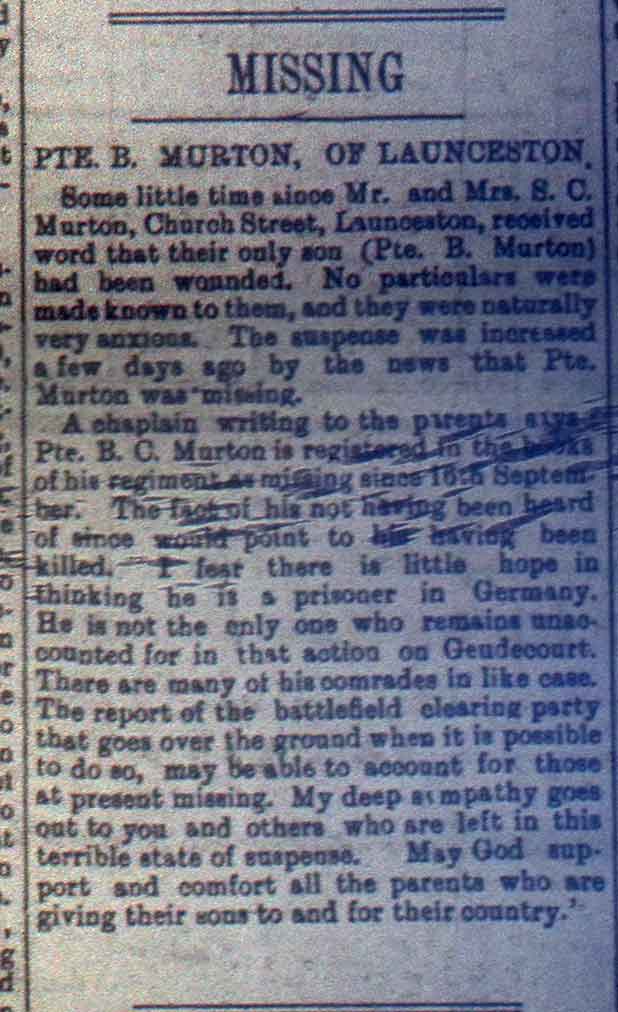
John NORTHMORE
John was born in 1871 to James and Sarah Northmore at St. Stephens, Launceston. His Father was a Labourer. He joined the Royal Navy straight from school and rose to Chief Petty Officer 139490 (R.F.R.Dev A.3229). He married Ida Bailey in 1905 and they set up home at St. Stephens, Launceston. He joined the Nelson Battalion Royal Naval Division (5th Battalion) and was killed in action on the 3rd of May 1915 fighting at Gallipoli, Turkey. His body was never identified but his name is commemorated at the Helles Memorial, Gallipoli, Canakkale, Turkey, Panel 1 and 2 and also on the Launceston War Memorial.
The 63rd (Royal Naval) Division was a United Kingdom infantry division which served during the First World War. It was originally formed as the Royal Naval Division at the outbreak of the war, from Royal Navy and Royal Marine reservists and volunteers who were not needed for service at sea, and fought at Antwerp and at Gallipoli. In 1916, following heavy losses among the original naval volunteers, it was transferred to the British Army as the 63rd (Royal Naval) Division, re-using the number from a disbanded Territorial Force division. As an Army unit, it fought on the Western Front for the remainder of the war.
John Stanley ORCHARD
John was born on the 11th of December 1886 at The Week Inn, Week St Mary, Cornwall to Thomas and Mary Orchard. His Mother died in 1900 probably in child birth. His Father having remarried to Jane Walkey in 1904, moved the family to run the Launceston Arms Hotel, Exeter Street, Launceston.
Wireman 2nd Class (Service No. M/13340) John Stanley Orchard was killed in action on 31 May 1916, when his ship the battle cruiser ‘HMS Queen Mary’ blew up and sank at Jutland. He was 19 years of age, had no known grave and is commemorated on the Portsmouth Naval Memorial and Launceston War Memorial.
HMS Queen Mary participated in the largest fleet action of the war, the Battle of Jutland in mid-1916. She was hit twice by the German battlecruiser Derfflinger during the early part of the battle and her magazines exploded shortly afterwards, sinking the ship. Her wreck was discovered in 1991 and rests in pieces, some of which are upside down, on the floor of the North Sea. Queen Mary is designated as a protected place under the Protection of Military Remains Act 1986 as it is the grave of 1,266 officers and men.
William OWEN
William was born in 1892 at Langore, Launceston to William and Mary Owen. His Father was a Quarry Labourer. On leaving School, William became an Apprentice Painter. With his wife Bessie he set up home in Tower Street, Launceston. He joined the DCLI as a Private (Regimental No 260014/33664) serving with the 1st/5th Battalion. He died at home of injuries sustained in battle, possibly during the Germans retreat to the Hindenburgh Line, on the 12th of August 1917. He is buried at Launceston Cemetery.
George Frederick OXENHAM
George was born around 1884 to Frederick and Emily Oxenham at Heavitree, Exeter. His Father, being born at Tetcott, was a Coachman/Groom.
He enlisted with the Devon shire Regiment at Teignmouth, Devon as a Private (Regimental No. 2955) in 1915 serving first in Asia before transferring to the 16th (Royal 1st Devon Yeomanry and Royal North Devon Hussars) Battalion(Regimental No 345310). He was killed on the 2nd of September 1918. His body was never identified but his name is commemorated at the Vis-en-Artois British Cemetery, Haucourt, Departement du Pas-de-Calais, Nord-Pas-de-Calais, France, Plot: Final resting place unknown. Name listed on the Vis-en-Artois Memorial, Panel 4 and also the Launceston War Memorial.
By 26th June 1918 the 16th were in the line at Norrent-Fontes and repulsed a German raid. Following up the retreating Germans, they advanced two miles in two days. During the heady advances of the last hundred days of the War, the 16th Devons were on the Somme sector. With fierce actions at Ronssoy and Epehy their casualties in September exceeded 200.
Thomas Henry PELLATT
Thomas was born in 1880 to Lewis and Rosina Pellatt at Stoke Damerell, Devon. His Father was a mariner born in Kent. Thomas married in 1907 to Jane Worden of South Petherwin. By the time of the war he was Artificer Engineer with the Royal Navy aboard the ‘HMS Exmouth’ (Service No 270310). He died of heart failure on the 5th January 1916. It is presumed that he was buried at sea as there are no records stating otherwise. He is commemorated on the Launceston War Memorial and the Plymouth Naval Memorial. At the time of his death his wife was living at Gordon Villa, Launceston, Cornwall.
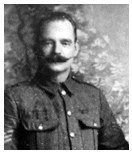
Charles was born in 1876 to Henry and Alice Phelps at Cheltenham, Gloucestershire. His Father was a Railway Signalman. At the age of 14 he went and worked as a General Labourer for a retired Baker Mr. Huxham and his wife at Chaceley. He married Mary Jane Buckley and they had 7 Children. He joined the DCLI at around 1893 serving in many countries including South Africa where three of his Children were born. On leaving the DCLI he and his family moved to St. Thomas Road, Launceston where he became the commissionaire at the Launceston Picture Theatre in Northgate Street. On the outbreak of War, he was re-enlisted with the DCLI (Regimental No. 5981) as Company Sergeant Major.
He was killed by shell fire on the 31st July 1915. His body was never identified but his name in commemorated at the Ypres (Menin Gate) Memorial, Ypres (Ieper), West Flanders (West-Vlaanderen), Belgium, Panel 20 and the Launceston War Memorial.
FALLEN IN THE FIGHT (Extract from the Cornish and Devon Times)
COMPANY-SERGT-MAJOR PHELPS
Sympathy will be extended to Mrs. Phelps, St Thomas, Launceston, in the sad news which has reached her that her husband, Company-Sergt-Major Phelps, 6th DCLI* was killed in action near Hooge on 30 July. The sad intelligence comes after a long period of suspense and anxiety for Sergt Phelps over several months, though at one time it was reported, sadly without foundation – that he was wounded and in hospital.
The news now comes through the inquiry department of the Red Cross who write that they have received a report, dated 9th November, from Corpl Hilliard, 11569, now on leave in France, who states that Sergt Phelps was killed by shell fire in Sanctuary Wood, near Hooge. It was, Corpl Hilliard says, impossible to remove him at the time as there was so many lying about, but later they were able to bury the dead.
Company-Sergt-Major Phelps was of course well known to many of our readers having been for a considerable time the popular commissionaire at the Launceston Picture Theatre. Previously, he had been in the Army, serving in the South African and other campaigns and rejoining soon after the outbreak of the present war to one of the newly-formed DCLI battalions. A smart soldier, and a man of the friendliest disposition, his death in the service of his King and country is keenly regretted by his many acquaintances.
Edwin PHILP
Edwin was born in 1892 to George and Elizabeth Ann Philp at Marshgate, Boscastle. His Father was an Agricultural Labourer. By 1911 he was working for his Uncle John Tinney (Frank Doidge another of the fallen previously mentioned also worked here) a Monumental Mason of Church Street, Launceston as a Stone Mason. He joined the DCLI as a Private (Regimental No. 19854) Serving with the 2nd Battalion in 1915. The 2nd Battalion were part of the 82nd Brigade that fought Near Kosturino, north of Lake Doiran, Salonika. He was killed in action in the Balkans on the 8th December 1916. His body was never found but he is commemorated on the Doiran Memorial, Doirani, Regional unit of Kilkis Central Macedonia, Greece, and on the Launceston War Memorial and the Wesleyan Roll of Honour.
Herbert POOLE
Herbert, or Bertie as he was known, was born in 1883 to Charles and Sarah Poole at Lee, Kent. His Father was a Gardener.On leaving School, Herbert became a Photographers Assistant in Sevenoaks, Kent. He moved to Launceston around 1906 and ran a Photographic Business whilst lodging with a Mrs. Hoskin at St. Thomas Hill. He enlisted at Launceston and joined the D.C.L.I in October 1914 but was later transferred to the Norfolk Regiment (Regimental No. 30063). He served with the 2nd Battalion as a Lance Sergeant. He was killed in action during the Second Battle for Kut in Mesopotamia on the 24th February 1917. His name is commemorated on the Basra Memorial, Al Basrah, Iraq, Plot: Panel 10, and also on the Launceston War Memorial.
The Second Battle of Kut was fought on 23 February 1917, between British and Ottoman forces at Kut, Mesopotamia. The battle was part of the British advance to Baghdad begun in December 1916 by a 50,000-man British force (mainly from British India) organised in two army corps.
The British, led by Frederick Stanley Maude, recaptured the city, but the Ottoman garrison there did not get trapped inside (as had happened to Townshend’s troops in the previous year when the Ottomans had besieged Kut in the Siege of Kut): the Ottoman commander, Kâzım Karabekir Bey, managed a good-order retreat from the town of his remaining soldiers (about 2,500), pursued by a British fluvial flotilla along the Tigris River. The British advance wore off on 27 February at Aziziyeh, some 62 miles beyond Kut. After three days’ worth of supplies had been accumulated, Maude continued his march toward Baghdad.
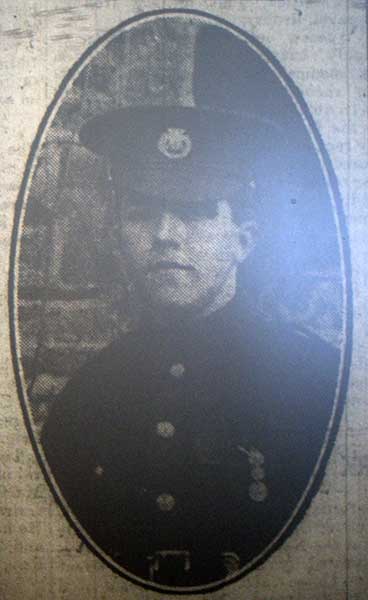
Harold was born in 1896 to John and Elizabeth Raymond at 16 Hill Park Cottage, Launceston. His Father was a Bill Poster. By 1911 Harold had become a Tailors Apprentice. He joined the DCLI 1st/5th Battalion as a Private (Regimental No.240637). He was instantly killed in France on August 23rd, 1917 when a shell fell close by to his companies position as they took part in the Gheluvelt Plateau actions, and a fragment pierced his head. He was buried where he fell, but was later reinterred at the Wieltje Farm Cemetery, Ypres, West Flanders (West-Vlaanderen), Belgium. Plot: B. 10. He is also commemorated on the Launceston War Memorial and the Wesleyan Roll of Honour. Captain E. M. Hodson wrote as follows:
“It is with deep regret that I have to inform you (though no doubt you have heard by telegram) that your son has been killed in action. It was on the night of the 23 August (1917) while the platoon was at (censored). A shell pitched close by and a large piece penetrated your son’s head. His death was instantaneous, and he was buried afterwards almost on the spot, where he fell. When circumstances permit a cross, which is being made, will be erected. On behalf of all my officers I beg to offer you our deepest sympathies in your great sorrow.“
Sec-Lieut. H. E. Ross wrote:
“Dear Mr. Raymond, I expect you have heard the sad news of your son being killed in action. On behalf of myself, his platoon commander, and his comrades, I beg to offer you our sincerest sympathy. Doubtless it will be some consolation to you to know that he died like a true British soldier doing his duty, his death was instantaneous, and that he is buried where he fell. I especially miss him, because he was one of my steadiest men under fire.“
Percy SANDERCOCK
Percy was born in 1882 to Richard and Elizabeth Sandercock at Wooda Lane, Launceston. His Father was a Royal Navy Pensioner having served with the Royal Marines who had seen action during the Zulu wars but in 1891 was working as a Porter. Percy attended the Launceston National school and the Wesleyan Sunday School. By the 1911 census, Percy was living in Salcombe and working as a Bus Driver. He married a Miss Wills in June 1916 at Kingsbridge. He enlisted at Newton Abbot with the Devonshire Regiment 9th Battalion as a Private (Regimental No. 21146). He was killed in action whilst at the front of Ecoust on April 2nd, 1917 in France. He is buried at the H. A. C. Cemetery, Ecoust-St. Mein, Ecoust-Saint-Mein, Departement du Pas-de-Calais,Nord-Pas-de-Calais, France, Plot: IV. K. 5. He is also commemorated on the Launceston War Memorial.
William John SAVAGE
William was born in 1894 at Langore, St. Stephens, Launceston to George and Ellen Savage. By the 1911 census he was living at Church Street, Launceston working for Mr. Nathaniel Reed as a Grocer’s Assistant. He originally enlisted with the DCLI (Regimental No.1928) at Launceston but sometime later was transferred across to the Worcestershire Regiment 3rd Battalion as a Private (Regimental No. 202657). He was killed in action near Ploegsteert during the German Spring Offensive on April 10th, 1918. His body was never recovered but his name is commemorated on the Ploegsteert Memorial, Comines-Warneton, Hainaut, Belgium, Plot: Panel 5. He is also commemorated on the Launceston War Memorial and the Wesleyan Roll of Honour.
On the 9th of April 1918, the 25th Division were in the front line near Ploegsteert when the German Spring Offensive was launched (The Battle of the Lys). They suffered badly in heavy fighting around Hill 63 and by the 12th of April the men of the 25th Division were involved in holding a new defensive front line in front of Dranoutre and Kemmel. The following day they were fighting a defence on the high ground East of Bailleul, but by the 15th the high ground and the town of Bailleul were in enemy hands and they withdrew through Boeschepe on the 16th.
Jack Richard SHARP
Jack was born in 1895 to Charles Orchard and Louisa Sharpe at Islington, London. His Father was a Journalist and in 1904 was the Editor for the Cornish and Devon Post in Launceston. Jack had attended Dunheved College (now Launceston College) by 1911 the family had moved to Plymouth.
On leaving school, Jack began work in the National Provincial Bank first at Bath and then the Brixham branch where he was still working as a Bank Clerk when he enlisted at Paignton in 1914. He joined the Territorial Force in 1913 and was mobilized on the outbreak of the war. He was Acting Bombardier (No. 748) of the 2nd Devon Battery, the 4th battalion, the Wessex Brigade. He served with the Indian Expeditionary Force in Mesopotamia and was attached to the 15th Division Signal Company of the Royal Engineers, having obtained a First Class Certificate at the Kasauli Signalling School of Instruction. He died on August 15th 1916 in a drowning accident whilst on a steamer travelling up the Euphrates River at Nasiriyah. He is commemorated on the Basra Memorial, Panel 3 and 60 and also on the Launceston War and Dunheved College War Memorial’s. In a letter written just a month before his death, Jack said: “Now, I hope you will not think that I am making a dreary view of things, but I consider it right to be prepared for every emergency. Do not think I am downhearted. I am not. I am looking forward to doing my bit, and if I am called upon to lay down my life, I shall do so cheerfully. So cheer up. . . . . I shall endeavour to do my duty like a Christian and an Englishmen.“
An officer wrote: “I write to tell you of the opinion formed of him as a result of two years close association. He was Assistant Quartermaster-Sergt of the battery, and my post of Capt. of the battery put me in charge of his department…I soon learnt that the initials ‘J.R.S.’ on a document were a guarantee that I could take it for granted that the document was correct and need trouble no further about it… He was a fine athlete, also a fine swimmer…Speaking for the officers of the battery, I can truthfully say that if Bombardier Sharp had wished it, they would have been happy to have seen him a brother officer and a member of the officer’s mess, and that the loss is a personal one to each of us.” And another: “Your brother at the time of his death was taking part in a small expedition against the Arabs, and was on his way up the Euphrates River with a small party…He was leaning up against the rail round the deck of the steamer. The railing suddenly gave way, hurling your brother into the river…He never came to the surface.” The chaplain wrote: “Jack made an excellent soldier…but he was more educated, and athlete and a soldier; he was a good Christian. I can certify that, for I had many talks with him…I entertained high hopes of his future as a leader of men in the coming time of reconstruction.” The Roll of Honour, Volume V, De Ruvigny. Page 152.
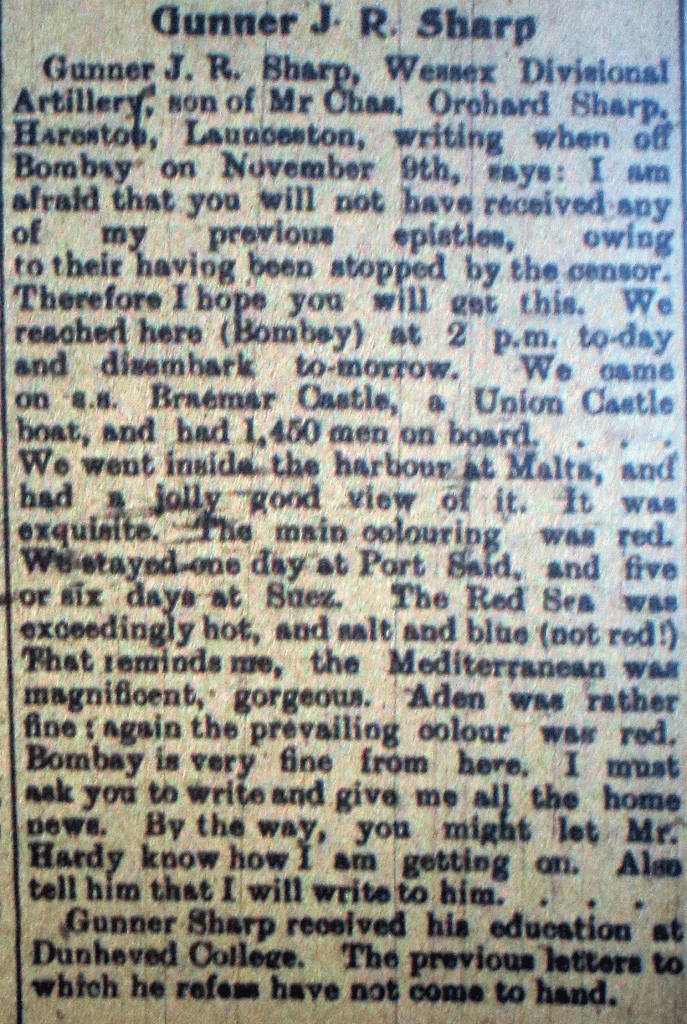
Richard Stanley SILLIFANT
Richard was born in 1900 to Richard and Hannah Sillifant at Lana Cottage Tetcott, Nr.Launceston. His Father was a Stone Mason. Richard served with the Lancashire Fusiliers 1/5 Battalion (T.F.) as a Private (Regimental No. 53196) He Died of his wounds sustained in action during the Battle of the Selle on the 23rd of October 1918. At the time of his death his Parents were living at 30 Tower St., Launceston, Cornwall. He is buried at the Awoingt British Cemetery, Awoingt, Departement du Nord, Nord-Pas-de-Calais, France, Plot: I. C. 1. He is also commemorated on the Launceston War Memorial and the Wesleyan Roll of Honour.
The Battle of the Selle (17–25 October 1918) was a battle between Allied forces and the German Army, fought during the Hundred Days Offensive. After a six-day halt for preparations and artillery bombardments Fourth Army troops attacked at 5.20 a.m. on Thursday 17 October. Infantry and tanks, preceded by a creeping barrage, moved forward on a 10 miles front south of Le Cateau. The centre and left of the Fourth Army forced crossings of the river, despite unexpectedly strong German resistance and much uncut barbed wire. Fighting was particularly fierce along the line of the Le Cateau–Wassigny railway. The right of the attack, across the upland watershed of the Selle, made most progress and by nightfall the German defences had been broken and Le Cateau captured. Fighting continued from 18–19 October, by which time Fourth Army, much assisted by the French First Army on its right, advanced over 5 miles (8.0 km), harrying the Germans back towards the Sambre–Oise Canal.
The British Third and First Armies, north of the Fourth Army, maintained the offensive pressure the following day. In a surprise joint night attack in the early morning of October 20th, Third Army formations secured the high ground east of the Selle. Following a two-day pause, to bring up heavy artillery, the attack was renewed on October 23rd (the day that Richard died) with a major combined assault by Fourth, Third and First Armies; the fighting, which continued into the next day, resulted in further advances. At this stage, the German Army was retreating at a forced but controlled pace. On October 24th, the German Army counterattacked at the Canal de la Dérivation but were repulsed and pushed back by the Belgian Army.
John Balhatchet SLEE
John was born in 1890 to William and Elizabeth (nee Balhatchet) Slee at Church Street, Launceston. Elizabeth died in 1894 when John was just four years old. His Father worked at the Launceston Savings Bank and was also Collector of taxes. By 1911 William had remarried Sophie and was a Bookseller and Stationer with John following into his Father’s business. For several years John was the Hon. Secretary for the Constitutional Club of Launceston and was also a keen member of Launceston’s Operatic Society and St. Thomas Church Choir. He initially enlisted with the R.F.A (107806) as a Lieutenant but later transferred to the DCLI 7th Battalion. He was slightly injured by a gunshot wound to his cheek but recovered and returned to the front. He was wounded during the German Spring Offensive on the 24th of March 1918 more seriously and taken to a field hospital which in turn was heavily shelled and John was killed. His body was never identified but his name is commemorated at the Pozieres Memorial, Pozieres, Departement de la Somme, Picardie, France, Plot: Panel 45. He is also commemorated on the Launceston War Memorial.
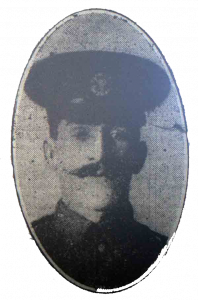
Samuel was born in 1882 at Coombe Brye Farm, Broadwoodwidger to Samuel and Mary Sleeman. His Father was a Farmer. On leaving school, Samuel worked at home on his Father’s Farm as a Carter. His Mum later moved to Wooda, Launceston. He initially enlisted with the Devonshire Regiment (Regimental No. 7701) in 1904 but later transferred to Somerset Light Infantry as a Corporal (Regimental No. 8064) serving with the 8th Battalion ‘C’ company. In 1916 at Hackney, London he married Gertrude Stayton but they never had any Children. Their marital home was at 376, Finchley Road, Hampstead, London.
He was killed in action just after the Somerset’s had been involved in the 2nd Battle of the Scarpe on the 28th of April 1917. He is buried at the Faubourg-d’Amiens Cemetery, Arras, Departement du Pas-de-Calais, Nord-Pas-de-Calais, France, Plot: Bay 4. He is also commemorated on the Launceston War Memorial and on the Broadwoodwidger Church Roll of Honour.
The Battle of Arras (also known as the Second Battle of Arras) was a British offensive on the Western Front during World War I. From April 6th to May 16th 1917, British troops attacked German defences near the French city of Arras on the Western Front. The British achieved the longest advance since trench warfare had begun, surpassing the record set by the French Sixth Army on July 1st 1916. The British advance slowed in the next few days and the German defence recovered. The battle became a costly stalemate for both sides and by the end of the battle, the British Third and First Armies had suffered about 160,000 and the German 6th Army about 125,000 casualties.
Claude SNELL
Claude was born in 1885 to George and Mary Snell at Bathpool, North Hill, Launceston. His Father was in the Royal Navy at the time of his birth, serving on the HMS “Implacable”. By 1901 George being a Naval Pensioner was working as a Rural Postman and Claude had become an Apprentice Millwright. George died in 1908.By 1911 he had joined the Royal Engineers Corps as an Electrician, (Regimental No. 14693) enlisting at Devonport, Plymouth. He rose to the position of Lance Corporal. It was whilst being attached to ‘H’ company of the Bombay Defence Light section (having served there since May 1915) that he lost his life at Sea on the Troop Ship Leasone Castle en route for Marseilles, when it was torpedoed by UB 51 (Ernst Krafft) to the West of Alexandria and sunk on the 25th of May 1918 with the loss of 83 men. He is buried at the Chatby Memorial, Alexandria, Al Iskandariyah, Egypt. His Mother Mary, had moved to 9, Higher Cleverfield, St. Stephens, Launceston, and it’s probably due to this move that Claude appears on both the North Hill and Launceston Memorials as his Brother, George below.
George SNELL
George was the brother of Claude (above) being born in 1891 at Bathpool, North Hill, Launceston to George and Mary Snell. By the He joined the Royal Navy in 1909 on a 12 year service period and in the 1911 census he is shown as being an Able Bodied Seaman with at Devonport, Plymouth. He transferred to the RNAS in early 1917 and in April of that year George was posted to RNAS Howden which was an airship station near York. The station covered the east coast ports to protect its shipping from U-boat attacks. On the first of April 1918 the RNAS was merged with the RAF just a month after George had been transferred to East Fortune a station near Edinburgh. This station had an airship base at Chathill, Northumberland and this was to be Georges final posting and he was now officially shown as a Corporal (314912) in the RAF working as an aircraft rigger. He died on the 18th of November 1918 after contracting influenza and double pneumonia at Wold House auxiliary Red Cross Hospital, near Diffield . He is buried at Nafferton All Saints New Churchyard, Driffield, Yorkshire. He is commemorated on the Launceston and North Hill War Memorials.
George Neal SPRY
George was born in 1894 to Daniel and Ann Spry at Boyton, Launceston. Boyton was in the county of Devon at this time. His Father was a Farmer and Butcher and the family was living at London House, Stowford in the 1901 census. By 1911 the family had moved to Market Street, Launceston and operated as Butchers which by this time George had joined. George married Elizabeth Medland (sister of Charles and Richard Medland) in 1915 at Launceston and in 1916 they had a Daughter Joyce. He appealed to the local tribunal to have his service enlistment cancelled but George’s final tribunal appeal was turned down. He enlisted with the Royal Engineer Corps at Launceston at the rank of DVR (Regimental No. 141221). He died whilst board the “Transylvania” in the Mediterranean near Savona, Italy on the 4th of May 1917.
On May 3 1917, the Transylvania sailed from Marseille to Alexandria with a full complement of troops, escorted by the Japanese destroyers Matsu and Sakaki. At 10 am on May 4 the Transylvania was struck in the port engine room by a torpedo fired by the German U-boat U-63 under the command of Otto Schultze. At the time the ship was about 2.5 miles (2.2 nmi; 4.0 km) south of Cape Vado near Savona, in the Gulf of Genoa. The Matsu came alongside the Transylvania and began to take on board troops while the Sakaki circled to force the submarine to remain submerged. Twenty minutes later a second torpedo was seen coming straight for the Matsu, which saved herself by going astern at full speed. The torpedo hit the Transylvania instead, which sank immediately. Ten crew members, 29 army officers and 373 soldiers lost their lives.
Many bodies of victims were recovered at Savona and buried two days later, in a special plot in the town cemetery. Others are buried elsewhere in Italy, France, Monaco and Spain. Savona Town Cemetery contains 85 Commonwealth burials from the First World War, all but two of them casualties from the Transylvania. Within the cemetery is the Savona Memorial which commemorates a further 275 casualties who died when the Transylvania sank, but whose graves are unknown. He is commemorated on the Savona Memorial, Launceston War Memorial and the Wesleyan Roll of Honour.
Herbert Edward STARR
Herbert was born in 1887 to Edward and Elizabeth Starr at Croydon, Surrey who had one further son, Harold. His Father worked as a Domestic Gardener. On leaving school Herbert worked as a Stores boy for a Dental Instrument Maker. By 1911 he was working as a Carpenter. In September of 1914 Herbert along with his Wife were voted in as the Workhouse Master and Matron at Launceston. They had been living in Shaftesbury. In 1917 the board of Guardians tried to claim an exemption on Herbert being called up but this was turned down by the Tribunal.
He first enlisted at Launceston with the Worcestershire Regiment (Regimental No. 37390) but transferred to the Somerset Light Infantry (Regimental No 35244) making the rank of Lance Corporal with the 1st Garrison Battalion in Jan 1917 formed at Plymouth. He died in India on the 12th of September 1919 and was buried the following day at Poona, Near Bombay. He is commemorated on the Launceston War Memorial.
Charles STEED
Charles or Charlie as he was known was born in 1887 to William and Elizabeth Steed at Landlake Mill, South Petherwin. His Father was a General Labourer but later became the live in Caretaker at Dunheved College. By 1911 he had married Mabel Grabham and was working as a Colliery Surface Labourer in Wales, living at 27 Hendrefadog Street, Tylorstown, Glamorgan. The couple had two children
He joined the Royal Horse Artillery and Royal Field Artillery as a Driver enlisting at Porth, Glamorgan (Regimental No. 230743). By 1918 the Family had moved to Taunton. Whilst serving with the 12th Divisional Ammunition Column he was killed by a stray shell whilst taking ammunition to the lines at Flanders on the 27th of September 1918. His body was picked up by American soldiers and buried behind the lines. He is commemorated on the Launceston War Memorial.
The Divisional Ammunition Column collected ammunition from the Army Service Corps Divisional Ammunition Park for onward transportation to a re-filling point where it could be transferred to a Brigade Ammunition Column. When during 1916 Brigade Ammunition Columns were dispensed with the Divisional Ammunition Column became responsible for transporting the ammunition to a re-filling point where it could be collected by ammunition wagons belonging to the individual batteries. At any one time, a Divisional Ammunition Column, together with the tactical units of the Division held one scale (the designated allocation of ammunition for the division). A second scale of ammunition was stored in the Divisional Ammunition Park whilst a third scale was stored in the Ordnance Depot. A Divisional Ammunition Column comprised 4 Sections, namely, No’s 1, 2 and 3 Sections which handled 18-pounder and small-arms ammunition, and No 4 Section which had a “Howitzer portion” for 4.5-inch and a “Heavy Portion” for 60-pounder ammunition. The latter portion was removed from the establishment in early in 1915 when the 60-pdr guns were withdrawn from divisions.
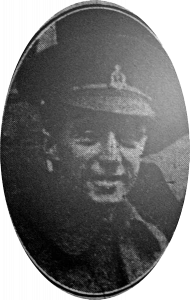
William was born in 1883 to Henry and Margaret Symons in Launceston. His Father was a Solicitors Clerk. By the 1901 census he was living in Lambeth, London working as a Civil Service Clerk. He served with the Royal Army Medical Corps (Regimental No 1862). Henry was a martyr to duty with his commanding officer stating that Henry was a bright example of devotion to duty. He would regularly go into the front trenches to aid and rescue the wounded without much thought to his own safety. It was this devotion to duty that ultimately cost him his life on the 5th of May 1916 when a shell burst near him seriously wounding him at Ersatz Valley. He was removed to Coupigny for surgery but died that same evening. He was interred at Quatre Vents military cemetery Row A Grave 5 in France. He is commemorated on the Launceston War Memorial.
Harold Shipley TAYLOR
Harold was born on the 24th of June 1876 to William and Edith Taylor at Kenley, Surrey. His Father is listed in the 1901 census as a Mining Engineer. Harold emigrated to Canada with his Brother Hubert between 1902 and 1911 and was listed as a Stationary Engineer when he enlisted at Windermere, British Columbia on the 25th of January 1916 with the 2nd Canadian Regiment (Regimental No 687273 British Columbia Regiment 47th Battalion). Harold was killed in action (Battle of Hill 70) at Lens, France on the 22nd of August 1917. His name is commemorated at St Thomas Church and at the Vimy Memorial, Pas de Calais, France. His Parents were living in Illogan, Cornwall in 1911 so it is possible that at some time they had moved to Launceston by the end of the war, which would be reason for his addition to the Launceston War Memorial. He is also commemorated on the Canadian Virtual War Memorial.
The Battle of Hill 70 was a battle of World War I between the Canadian Corps and five divisions of the German 6th Army. The battle took place along the Western Front on the outskirts of Lens in the Nord-Pas-de-Calais region of France between August 15th and 25th 1917.
The objectives of the assault were to inflict casualties and to draw German troops away from the 3rd Battle of Ypres, rather than to capture territory. The Canadian Corps executed an operation to capture Hill 70 and then establish defensive positions from which combined small-arms and artillery fire, some of which used the new technique of predicted fire, would repel German counter-attacks and inflict as many casualties as possible. The goals of the Canadian Corps were only partially accomplished; the Germans were prevented from transferring local divisions to the Ypres Salient but failed to draw in troops from other areas.
Sydney William THOMAS
Sydney was born in 1898 at Starr Cottage, Coombe Martin to William and Ellen Thomas. His Father was a General Agricultural Labourer. He married Dorothy and set up home at 3 Clarence Terrace, Launceston.
Before joining up he worked for Shuker and Reed. He initially enlisted in 1916 with the Duke of Cornwall’s Light Infantry (Regimental No. 30107) as a Private but was transferred to the 1st Battalion of the Wiltshire Regiment (Regimental No. 220042). He was killed in action during the Battle of Messines on the 7th of June 1917. His body was never identified but his name is commemorated at the Ypres (Menin Gate) Memorial , Ypres, West Flanders (West-Vlaanderen), Belgium and also on the Launceston War Memorial.
The Battle of Messines (June 7th-14th 1917) was conducted by the British Second Army (General Sir Herbert Plumer), on the Western Front near the village of Messines in West Flanders, Belgium, during the First World War. The Nivelle Offensive in April and May had failed to achieve its more ambitious aims, had led to the demoralisation of French troops and dislocated the Anglo-French strategy for 1917. The offensive at Messines forced the Germans to move reserves to Flanders from the Arras and Aisne fronts, which relieved pressure on the French. The tactical objective of the attack at Messines was to capture the German defences on the ridge, which ran from Ploegsteert (Plugstreet) Wood in the south, through Messines and Wytschaete to Mt. Sorrel, to deprive the German 4th Army of the high ground south of Ypres. The ridge commanded the British defences and back areas further north, from which the British intended to conduct the Northern Operation, an advance to Passchendaele Ridge and then capture the Belgian coast up to the Dutch frontier.
Harriet Dorothy Margaret THOMPSON
Harriet was born in 1893 to Dr. William ‘Willie’ Fookes and Harriet Thompson at Launceston. Her Father was the local GP for Launceston, living at Penquite, Launceston. Harriet followed her Father into the Medical Practice and became a Nurse. With the onset of war she joined the Volunteer Aid Detachment and helped look after injured Soldiers. She unfortunately contracted TB from one on the soldiers she had been nursing and as the illness worsened, she returned home to Launceston to be looked after by her Father. She died in the September of 1918.
The Cornwall & Devon Post, dated 27 July, 1918, carried the sad news: “Death. Thompson, on July 22nd, at Penquite, Launceston, Harriet, Dorothy Margaret, only daughter of Dr and Mrs Thompson.”
In the same edition: “Miss Thompson’s Death. Great sympathy with the Mayor and Mayoress. The residents of the borough of Launceston have extended very real sympathy to the mayor and mayoress in the death of their only daughter, at the early age of 26 years. At the outbreak of war Miss Thompson enrolled as a helper in the Launceston V.A.D. Hospital, and while engaged as a nurse in a Brighton hospital some months since, she had a serious breakdown in health. Nurse Thompson came home to die. She had thus virtually given her life for her country. Her remains were laid to rest in St Stephen churchyard on Wednesday afternoon. The funeral was one of the largest witnessed of recent years. The coffin, covered with the Union Jack, was placed on a bier and wheeled to the church by a St John Ambulance squad. Seven carriages followed the bier. The procession was a long one. The attendance was so enormous that there was not room in the church for all.”
There followed a long list of mourners- family, servants, Councillors, etc. The bearers were members of the St John Ambulance and British Red Cross Society, and former orderlies at the VAD Hospital, comprising – Messrs: JR Quick, SC Mutton, LP Symons, AS Keat, WH Philp and WT Mills; with Mr. CS Atkins in charge. Rifleman G Wicks, Croix de Guerre, blew ‘Last Post’. She is commemorated on the Launceston War Memorial and on the St Stephens Church Roll of Honour.
Claude TUCKER
Claude was born on September 17th, 1893 to George and Edith Tucker at St. Austell. His Father, a Lezant man, worked for Pearl Assurance. (His brother Leslie, below, also perished in the war).
He served as a Leading Telegraphist (Service No. J.3757) aboard ‘HMS Defense’ which was sunk on May 31st, 1916 during the Battle of Jutland when two salvoes from German Ships detonated her rear magazine. The fire from the explosion spread to the ship’s secondary magazines, which exploded in turn. There were no survivors. His name is commemorated on the Plymouth Naval Memorial, Plymouth, Devon, Plot: 13 and on the Launceston War Memorial.
Defence was sunk on May 31st 1916 during the Battle of Jutland, the largest naval battle of the war. Escorting the main body of the Grand Fleet, the ship was fired upon by one German battlecruiser and four dreadnoughts as she attempted to engage a disabled German light cruiser. She was struck by two salvoes from the German ships that detonated her rear magazine. The fire from that explosion spread to the ship’s secondary magazines, which exploded in turn. There were no survivors.
Leslie Henry Harvey TUCKER
Leslie was born in 1898 to George and Edith Tucker at St. Austell. His Father was an Agent for Pearl Life Assurance. By 1911 George had passed away and Edith had moved the family to 3 Bellevue, Westgate Street, Launceston. Leslie worked for W. H. Symons, jeweller in Church Street, Launceston. Leslie enlisted in May 1917 as a Driver with the Royal Horse Artillery and Royal Field Artillery Regiment (Regimental No. 238687). He died of his wounds on October 10th, 1917 whilst serving with the 298th Brigade. He is buried at the Mendinghem Military Cemetery, Poperinge, West Flanders (West-Vlaanderen), Belgium, Plot: VI. E. 7. He is commemorated on the Launceston War Memorial and the Royal Regiment of Artillery Memorial.
The Royal Field Artillery was the most numerous arm of the artillery, the horse-drawn RFA was responsible for the medium calibre guns and howitzers deployed close to the front line and was reasonably mobile. It was organised into brigades.
Edgar VOSPER
Edgar was born in 1893 to Charles and Emma Vosper at Banham, Launceston. His Father was a farmer and Butcher which was a trade that Edgar took up on leaving school. He joined the Royal 1st Devon Yeomanry (Hussars) as a Private (Regimental No. 2486). He died of dysentery in Egypt that he contracted whilst fighting at Gallipoli on November 2nd, 1915. He is buried at the Alexandria (Chatby) Military Cemetery, Alexandria Al Iskandariyah, Egypt, Plot: B. 133. He is commemorated on the Launceston War Memorial.
Darrell Francis Stephen VOWLER
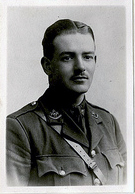
Darrell was born in 1895 to Francis and Ellen Vowler at Kotagalle, Ceylon. His Father was listed as a Tea Planter which in reality meant that he owned Tea plantations in Ceylon. The family home was Edymead House, Launceston. Attended Oaklands Court preparatory school, St Peter’s, Thanet, Kent and Sherborne School (School House) January 1910-December 1912; He then attended Sandhurst where he received his commission with the Sherwood Foresters (Nottinghamshire and Derbyshire Regiment) as a 2nd Lieutenant. He was subsequently promoted to Lieutenant on November 15th 1914; Temporary Captain on December 9th 1915; Temporary Captain with the Machine Gun Corps October 24th 1916; Captain with the Sherwood Foresters; and finally Temporary Major with the Machine Gun Corps February 16th 1918. He was severely wounded whilst serving with the Canadians who were attacking Vimy Ridge in April 1917, and was evacuated to a hospital in England. He died on February 28th, 1919 at Hazeley Down, Winchester after contracting influenza which led pneumonia. He was acting Lieutenant Colonel. He is buried at the Launceston Cemetery and is commemorated on the Launceston War Memorial.
The Battle of Vimy Ridge was part of the Battle of Arras, in the Nord-Pas-de-Calais region of France, during the First World War. The main combatants were the four divisions of the Canadian Corps in the First Army, against three divisions of the German 6th Army. The battle took place from April 9th-12th 1917 at the beginning of the Battle of Arras, the first attack of the Nivelle Offensive, which was intended to attract German reserves from the French, before their attempt at a decisive offensive on the Aisne and the Chemin des Dames ridge further south.
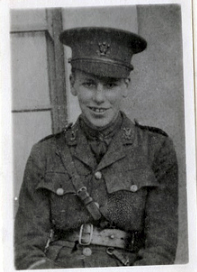
Darrell’s Brother, John was born in 1897 at Kotagalle, Ceylon. He attended Oaklands Court preparatory school, St Peter’s, Thanet, Kent and Sherborne School (School House) September 1911-December 1914; 6th form. He then entered Sandhurst in January 1915, and obtained his commission in the Leinster Regiment in June 1915. For WW1, Lieutenant in the Prince of Wale’s Leinster Regiment (Royal Canadians), 3rd Bn. (Reserve), attached to the Machine Gun Corps. Served in France. In April 1916 he was accidentally wounded in the head while cleaning a revolver, and was sent home. On his recovery he joined the Machine Gun Corps and was stationed for some time at Grantham, proceeding to France again at the beginning of May 1917. Early in July 1917 he was sent to hospital at Rouen suffering from debility. Then his old wound began to trouble him again and he was sent home to England in an extremely dangerous condition. He died in Netley Hospital on 19 July 1917 as the result of the bursting of an abscess on the brain. He is buried at Netley Church.
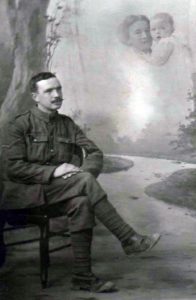
Gustavis or Lambert as he was better known,was born in 1889 at Penzance to Alfred and Rosina Webber one of eleven children. His Father was a Cornwall Constabulary Inspector and moved around the county, finally ending up in Launceston by 1911 as a Superintendent, by which time Gustavis had left home and was working as an Ironmongery Shop Assistant. In July of 1913 he married Kate Osborne at the Wesleyan Church at St. Austell and they set up home at Trewoon, St. Austell having one Daughter Eileen.
He enlisted at Plymouth in April 1916 joining the Royal Garrison Artillery as a Lance Bombardier of the 61st Siege Battery (Regimental No 73528). He fought in many battles and was gassed in March 1918 but survived that only to be killed in action the following month during the Battle of the Lys on the 29th of April 1918 and is buried at the Hazebrouck Communal Cemetery, Hazebrouck, Departement du Nord, Nord-Pas-de-Calais, France, Plot: III. B. 16. He is also commemorated on the St. Mewan War memorial and Launceston War Memorial and also the Launceston Wesleyan Roll of Honour.
The Battle of Lys was part of the 1918 German Spring Offensive ordered by Luderndorff in a final attempt by the Germans to break the Allied lines around Ypres. The Battle of Lys can go by numerous titles and has been called the Fourth Battle of Ypres, the Lys Offensive and the Third Battle of Flanders. The aim of the Battle of Lys from the German point of view was to capture Ypres (Ieper) and the surrounding high ground around Messines. The River Lys formed a barrier between two Allied armies. The First Army commanded by General Horne was south of the river while the Second Army commanded by General Plumer was to the north. The Germans planned to attack the First Army south of the river before moving northwest. The attack started on April 9th 1918 following a two-day artillery bombardment. The German Sixth Army attacked. At Nueve Chapelle they came across 20,000 Portuguese soldiers from the 2nd Portuguese Division who were commanded by General Gomes da Costa, a future President of Portugal. These troops were due to be relieved from front line duty the day the attack started. Facing them were 50,000 German troops. Short of officers and equipment, their resistance was short-lived and they retreated five miles suffering 7,000 casualties killed, wounded and missing. This gave the Germans all the incentive they needed as they had advanced much further into the Allied line than previously expected for that day. General Horne was forced to pull back as well as he had to cover the gap created by the Portuguese withdrawal. However, the British 55th Division based to the south of the Portuguese managed to halt a German advance in this area Another German attack on April 10th led to the capture of what was left of the village of Messines. While the ruins of the village may not have accounted for much, the Germans greatly benefited by the height that the Messines Ridge gave to them. On April 12th the Germans made a concerted attempt to capture Hazebrouk, a major Allied logistics centre. The capture of this town would have been a major blow for the Allies. However, the town held out when the Australian 1st Division halted the German advance five miles from the town centre. The German advance was such that Field Marshal Haig asked the new General-in-Chief Allied Forces, Marshal Foch, for reinforcements. Initially Foch was unwilling to send reinforcements but on April 14th he did just this. However, between April 10th and April 14th, British troops had been in a precarious position and Haig issued his famous “backs to the wall” order: “With our backs to the wall, and believing in the justice of our cause, each of us must fight on to the end.” The arrival of reinforcements eased Haig’s plight. While the Germans continued to advance and took several key targets (Mount Kemmel and the Scherpernberg – both of which gave the Germans height advantage), the attack had started to stall by April 29th with the arrival of French reinforcements. Luderndorff called a halt to the attack. The gains at the Battle of Lys were the last the Germans made in World War One. The Battle of Lys cost the Germans dearly in terms of men lost. While the arrival of thousands of US troops boosted Allied manpower, the Germans could not afford such losses despite men arriving from the Eastern Front. The Germans lost 120,000 killed, wounded or missing. While the initial territorial gains in the battle may have boosted German confidence in their High Command, they could not cope with their overall losses. (From the www.historylearningsite.co.uk)
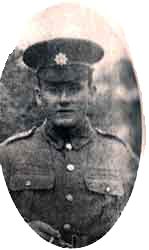
Horace was born at Landlake Farm in November 27th 1895 to William and Florence Westlake (Nee Harris who died in 1899).His Father was a farmer who remarried Anna Westlake in 1900. William’s health declined over the coming decade and he died in 1911. The family had moved to Treniffle, Lawhitton but on William’s death they moved to Western Road Launceston with Horace taking up employment with Mr. Bickle at Linnick Farm, South Petherwin, before taking up work at Falmouth. Horace joined the Devonshire Regiment in 1914 as a Lance Corporal. His Younger brother, Cecil, served with the Duke of Cornwall’s Light Infantry and was captured by the Germans but survived the war. Horace (Private 14662) served with the 8th Battalion. He was killed in action at the Battle of Loos on the 25th September 1915 aged just 19. The Devonshire Regiment were in action at the Battle of Loos and many, like Horace, including Lawrence Geake, lost their lives on the very first day of the offensive where the British used gas for the first time. Horace’s body was never found and is likely to be one of the many at Loos Cemetery ‘ known only to God’. However a bible found on the Loos Battlefield by Private Pattison Walton of the 2nd Battalion Border Regiment, is actually Horace’s. (Inside he wrote ‘’Found on the Battle Field on Sept 26 by Pte P Walton, 2nd Batt Border Reg. This bible belonged to one of the Devons who charged with us. Found on the field after the attack of Loos and Hulluch on Sept 26/9/15.” ). Mr. Walton presented the bible some 50 years ago to a lady in Surrey who has spent many years researching who the bible belonged to. It’s been confirmed that it is in fact Horace’s, given by the South Petherwin Wesleyan Sunday school in 1906. His body was never recovered but he is commemorated on the Loos Memorial Panel 35 to 37, as well as the Buddock, Launceston, South Petherwin War Memorials.
Arthur Henry WHITFORD
Arthur (Boysie) was born in 1898 to Arthur and Jane Whitford at Race Hill, Launceston. His Father was a Tinplate Marker working for himself. By 1911 Arthur had 3 Sisters and 3 Brothers and the family were still living at the same address in Race Hill, Launceston.
Arthur enlisted with the DCLI rising to the Rank of Lance Corporal (Regimental No. 240210) serving with the 1st Battalion. He was killed in action during the Battle of Broodseinde which was part of the Third Battle of Ypres on the 4th of October 1917. His body was never recovered but his name is commemorated on the Tyne Cot Memorial, Zonnebeke,West Flanders (West-Vlaanderen), Belgium and also on the Launceston War Memorial.
The Battle of Broodseinde was fought on 4 October 1917 near Ypres in Belgium, at the east end of the Gheluvelt plateau, by the British Second and Fifth armies against the German 4th Army. The battle was the most successful Allied attack of the Third Battle of Ypres. Using “bite-and-hold” tactics, with objectives limited to what could be held against German counter-attacks, the British devastated the German defence, which prompted a crisis among the German commanders and caused a severe loss of morale in the German 4th Army. Preparations were made by the Germans for local withdrawals and planning began for a greater withdrawal, which would entail the abandonment by the Germans of the Belgian coast, one of the strategic aims of the British offensive.
After the period of unsettled but drier weather in September, heavy rain began again on 4 October and affected the remainder of the campaign, working more to the advantage of the German defenders, who were being pushed back on to far less damaged ground. The British had to move their artillery forward into the area devastated by shellfire and soaked by the return of heavy rain, restricting the routes on which guns and ammunition could be moved, which presented German artillery with easier targets. In the next British attack on 9 October, after several more days of rain, the German defence achieved a costly success, holding the approaches to Passchendaele village, which was the most tactically vital ground on the battlefield.
Frederick William WICKS
Frederick was born on the 26th October 1898 to Frederick and Annie Wicks (ne Tighe) at Raglan Barracks, St Aubyn, Devonport, Plymouth. His Father was a Bookbinder and Printer and originally came from Truro. His Mother Annie was from Dublin, Ireland. In 1911 they were residing in premises in Castle Street, Launceston with all 11 of Frederick juniors siblings. At the outbreak of War Frederick enlisted with the DCLI (the same Regiment that his Father had previously served with in 1890’s) as a Drummer (Regimental No. 1707) serving with the 5th Battalion. He died at 1st Northern General Hospital on the 6th of June 1915 at the age of just 16 and was interred at Launceston Cemetery. He is commemorated on the Launceston War Memorial.
This concludes those that fell that are included upon the War Memorial, but there were other brave men not mentioned from Launceston, that also perished during the war and I have listed a few below.
Thomas Norman Howard JOHNSON
Thomas was born in 1893 to Thomas and Ellen Johnson (nee Howard) at Rainhill, Lancashire. His Father, who came from Ireland, was a Clergyman, and in 1901 the Family were living at St. Catherines Hill, Launceston. The Family had arrived in Launceston in 1897 as Thomas Senior took up the position of Vicar for St. Thomas, a role that he played for 13 years. In the 1911 census Thomas junior is shown staying at the Scotts Waverley Hotel, Southport presumably visiting relations. In the June of 1913, by which time the family had moved to Weston Super Mare, Somerset, he enlisted with the Grenadier Guards but was then was discharged on 25th August 1913 with payment of £10. At the outbreak of war he enlisted with the Devonshire Regiment (Regimental No. 33633) serving with the 9th Battalion. He was killed in action at Yppres during the Battle Of Broodseinde on the 7th of October 1917. His body was never recovered but his name is commemorated at the Tyne Cot Memorial, Zonnebeke, West Flanders (West-Vlaanderen), Belgium Panel 38 to 40.
The Battle of Broodseinde was fought on 4 October 1917 near Ypres in Belgium, at the east end of the Gheluvelt plateau, by the British Second and Fifth armies against the German 4th Army. The battle was the most successful Allied attack of the Third Battle of Ypres. Using “bite-and-hold” tactics, with objectives limited to what could be held against German counter-attacks, the British devastated the German defence, which prompted a crisis among the German commanders and caused a severe loss of morale in the German 4th Army. Preparations were made by the Germans for local withdrawals and planning began for a greater withdrawal, which would entail the abandonment by the Germans of the Belgian coast, one of the strategic aims of the British offensive.
After the period of unsettled but drier weather in September, heavy rain began again on 4 October and affected the remainder of the campaign, working more to the advantage of the German defenders, who were being pushed back on to far less damaged ground. The British had to move their artillery forward into the area devastated by shellfire and soaked by the return of heavy rain, restricting the routes on which guns and ammunition could be moved, which presented German artillery with easier targets. In the next British attack on 9 October, after several more days of rain, the German defence achieved a costly success, holding the approaches to Passchendaele village, which was the most tactically vital ground on the battlefield.
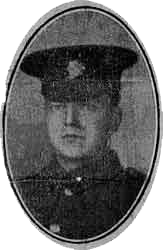
Reinfred was born in 1893 to Reinfred and Mary Atkins at Launceston. His Father was a Mason who died in July 1904 after falling 15 feet from a roof. By 1911, the family had moved to Plymouth and were residing at 39 Ashford Road with Reinfred working as a Baker. At the onset of war, Reinfred joined the Devonshire Regiment as a Private (Regimental No 10309) serving with the 8th (Service) Battalion. Like two others from Launceston, Reinfred was killed in action at the ‘Battle of Loos’. His body was never recovered. But his name is honoured on the Loos Memorial Panel 35 to 37.
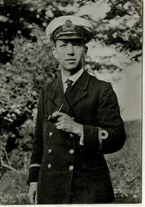
Eric was born on the 28th of August 1895 at St. Agnes to Thomas and Annie Bennetts. His Father was a Clergyman and was the Vicar of Lewannick (Where Eric spent most of his childhood) up to 1914 when the family moved to Cape Town, South Africa. He attended Hazeldon Preparatory School, Tavistock, Devon before going to Sherborne School (The Green) from September 1909 to July 1913, he was a scholar in the 6th form. He won the Digby Maths prize in1913. He completed his studies at a college in Cape Town. He originally was a Lance-Corporal in the Cape Town Highlanders, South African Defence Force (Signalling Instructor) but in the spring of 1916, he returned to England to join the Royal Flying Corps (R36035) and became a Flight Sub Lieutenant in the Royal Navy Air Service. He was reported missing in September 1917 after his plane, a Sopwith Camel F1 biplane, collided with another British Sopwith, piloted by Philip Johnston, behind enemy lines and was confirmed as having died in February 1918.He is buried at the Cabaret-Rouge British Cemetery, Souchez, epartement du Pas-de-Calais, Nord-Pas-de-Calais, France, Plot: XV. R. 22.
On the 26th of February 1918, a service of commemoration was held at Lewannick Church with the tributes being paid: Floral tribute – “In loving memory of dear Eric from Commander & Mrs Watts Russel. From all at Pen Tamar.”Floral tribute – “In proud & loving memory of Eric & those who fell in the Great War from this Parish. Mrs & Miss Bennetts of Lifton.”Floral tribute – “In proud & loving memory of Eric Augustine Bennetts & all those who from this Parish fell in the Great War, from Rev. & Mrs W.T. Bennetts.
At the time of his death, his Sister, Evelyn Maud Bennetts, was living at Roydon Road, Launceston, the address he used as a place of residence. For this reason, he is mentioned on the St. Stephens Church’s roll of honour.
George BROWN
George was born in 1884 at Launceston to James and Jane (nee Harris) Brown. His father was a farm labourer. He enlisted with the 2/8th Battalion of the Lancashire Fusiliers (Regimental No. 307298). He was killed on the 11th of November 1917 at Cambrai. He appears on the St. Thomas ‘Roll of Honour’ and on the Tyne Cot Memorial, Panel 54 to 60. He left a widow Frances Brown, of 6, Crwys Place, Roath, Cardiff.
Edward BUDGE
Edward was born in 1889 to William and Ann Budge at St. Thomas Hamlet, Launceston. His father was a Butcher. It seems that the family had split by 1911 as William was an inmate at Launceston Workhouse and Ann was in service. Before 1911 Edward had enlisted at Bedford with the Bedfordshire Regiment (Regimental No. 9202). He died of his wounds on the 18th of March 1915. He is buried at the Le Touquet-Paris Plage Communal Cemetery, Le Touquet-Paris-Plage, Departement du Pas-de-Calais, Nord-Pas-de-Calais, France, Plot: I. B. 14.
Wilfred David CLARKE
Wilfred was born in 1878 to John and Emma (nee Bowles) Clarke at 2 Laura Cottages, Exeter. His father, a Launceston-born man, was a brushmaker but died in December 1889. His mother, Emma, moved the family to Launceston where they set up home at 16 Kensey View where she earned a living as a seamstress. On leaving school aged 13, Wilfred worked as a servant boy but by the time of the 1901 census, the family had moved again, to 4 The Bank Building, Christchurch Road, Bournemouth, where Wilfred was working as a mineral water bottler. In 1902, he married Lily Louise Batten at Christchurch and together they set up home at 6 Albert Place, Buckland, Lymington. They went on to have four daughters. At the outbreak of the war, Wilfred enlisted with the Military Transport division of the Royal Army Service Corps at Lymington (Regimental No. M/148453). Little is known of his service during the war, but Wilfred died at the family home 5, Broad Lane, Lymington, on Thursday 31 October 1918. He was interred in the Lymington Cemetery, plot 2417. His name is commemorated on the Lymington War Memorial.
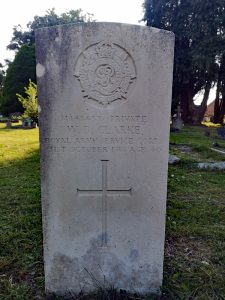
Herbert Lionel John EDWARDS
Herbert was born on January 15th, 1882 at Lambeth, London to Hannah Edwards (1855-1943). He enlisted at Birmingham with the Royal Warwickshire Regiment as a Private (Regimental No. 17694) serving with the 14th Battalion. He gained promotion to Lance Corporal. He was killed in action during the Battle Of Guillemont which was part of the bigger Battle of the Somme, on September 3rd, 1916. His body was never identified but his name is commemorated on the Thiepval Memorial, Pier and Face 9 A 9 B and 10 B. At the time of his death he was living in Launceston.
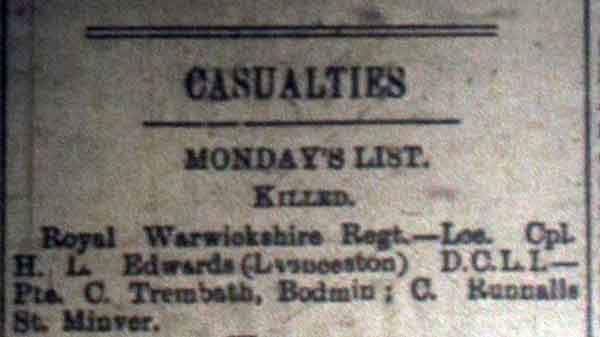
On September 3rd, 1916, the village of Guillemont, held by German Second Army, was again the subject of a large scale British attack. The main assault was led by 20th (Light) Division with 5th Division attacking in support from the south-east.
Arthur ELLICOTT
Arthur was born in 1895 to William and Hannah Ellicott (Both born in Launceston) at Cardiff. His Father was a Commercial Traveler and the family lived a various areas around Britain, finally moving to Kingston upon Thames, Surrey by 1911. On leaving school Arthur became an Apprentice Watchmaker.
He enlisted at the onset of war on the 21st of August 1914 with the East Surrey Regiment 7th Battalion (Regimental No 598). He is listed as being of pale complexion, with brown hair and grey eyes. He had distinctive marks of moles and a scar. His chest size was 33 inches and weight of 133 pounds. In 1915 he contracted malaria and passed away at home on the 28th of September 1915. He was interred at the Netley Military Cemetery, Hampshire, N. 349.
William G. HEARNE
William was born c.1890. His mother was Emily Penrose who lived at Western Terrace, Launceston. Private with the Devonshire Regiment (Regimental No. 8860) serving as a Private with the 2nd Battalion. He was Killed in Action on the 18th December, 1914 near Moated Farm between the Zillebeke Lake and the former railway track Ypres-Roulers (now the Zuiderring) Ypres where the 2nd Battalion helped capture the position from the Germans. His body was never recovered but his name is commemorated on the St. Thomas ‘Roll of Honour’.
William John KENT
William was born in 1885 to William and Emmeline Kent at Torquay. His father was a Police constable with the Devon county constabulary. His parents came to live at Truscott by 1914 with his father now serving with the Cornwall constabulary. William joined the the Royal Field Artillery in 1905. He was given a commission in 1914 on the field of battle for conspicuous bravery. Now a 2nd Lieutenant and after a few days leave at Christmas 1915 where he married Bertha Ellacott at North Petherwin church, he returned to France. On March 11th his battery were ordered up to take part in the battle of Neuve Chappelle. On the morning of the 12th, a shell burst close to him, killing William and another soldier, and wounding eight others of his battery. He was buried on the spot he fell. William appears on the St. Stephens ‘Roll of Honour’. His brother Frederick Thomas Kent also served during the war also being awarded a commission.
Benjamin MAYOR
Benjamin was born in 1886 to Joseph and Rosannah Mayor at St. Lukes, Lancashire. His father was a Cotton Overlooker. In 1911 Benjamin was working as a Grocery Warehouseman still living with his parents in Blackburn. He enlisted at Blackburn with the Royal Fusiliers serving with the 10th Battalion of the Kings Royal Rifles (Regimental No. R/1714). Listed as “Wounded” on the Casualty List issued by the War Office from October 2nd, 1915. (He was entitled to wear a “Wound Stripe” as authorised under Army Order 204 of July 6th, 1916). The terms of this award being met by their naming in this list. He was killed at Ypres on February 28th, 1916. He was interred at the La Belle Alliance Cemetery, West Vlaanderen Belgium. He appears on the St. Thomas ‘Roll of Honour’ due to his sister being Rev. J. J. Haworth’s (St. Thomas’s Rector) wife. In a letter of sympathy to his parents, the army chaplains wrote “It was my sad duty last evening to lay to rest the body of your brave son who laid down his life for his country and for his God. Death was instantaneous and he was spared a time of suffering. You have just cause to be proud of one who did his duty so well.“
George William Faulconer MORGAN
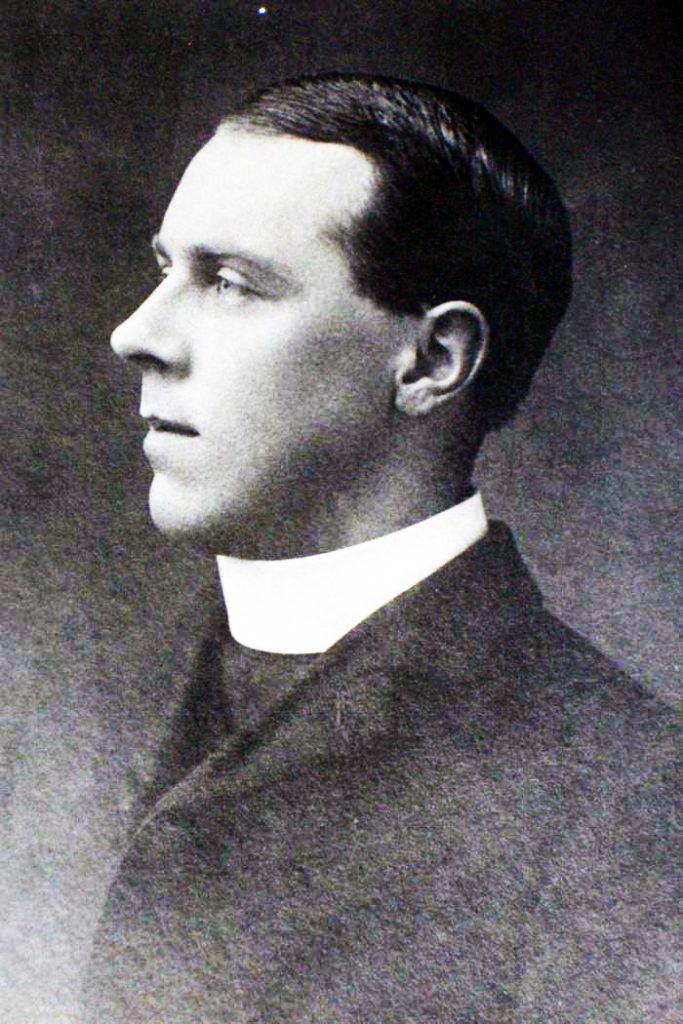
George was born in 1878 to James Hill Faulconer and Amelia Morgan. He studied at Pembroke College (entering in 1900), Cambridge where he obtained a BA in the Mathematical Tripos (June Opt.) in 1903 and trained for the Priesthood at Wells Theological College in 1903. He was made a Deacon in 1904 and ordained Priest by the Bishop of Exeter in 1905 serving his Title as Curate of Stoke Damarel from 1904-06, when he became a Chaplain to the Royal Navy. Formerly Lieutenant in the 12th (Suffolk) Regiment, he served on HMS Prince of Wales 1906–07; HMS Venus 1907–08; at the RN College, Osborne 1908-09 then HMS Berwick 1909 –10; HMS Challenger 1910–12; HMS Powerful 1912–13 and HMS Impregnable 1913–15. He was serving aboard ‘H.M.S. Invincible’ when she was sunk at the Battle of Jutland on the 31st of May 1916. His body was never recovered but he is commemorated on the Portsmouth Naval Memorial Panel Ref: 1, also on the Northam War Memorial, the St Margaret’s Book of Remembrance, the R.N.D.Golf Club WW1 Memorial Board and the St Stephens Roll of Honour.
HMS Invincible was an Invincible Class battle cruiser built at Vickers Armstrong, Elswick, Newcastle upon Tyne in 1909. The Flagship of Admiral Sir Horace Lambert Alexander Hood, she was sunk by SMS Derfflinger and Lutzow the latter being badly damaged by HMS Invincible. The entire ship’s company of 1026 were lost.
Alfred Leslie QUINTRELL
Alfred was born in 1893 to Alfred and Annie Quintrell at Kensington, London. Both his Parents were Cornish with his Father being employed as a Wheelwright/ Coach Builder. The family returned to live at St. Columb by the 1911 census with Alfred working as an Electrician. It was this line of work that brought Alfred to Launceston to work as the Operator at the Launceston Picture Theatre. He joined the Royal Navy in early 1915 and served upon ‘HMS Black Prince’ as a 2nd Class Wireman (Service No. M13988). He was killed in action on the 31st of May 1916 when the ‘Black Prince’ participating in the Battle of Jutland, was sunk with heavy loss of life. The circumstances under which she sank were mysterious for some years after. As the British had lost contact and did not see the ship destroyed, they were unsure as to whether a submarine or surface ship was responsible for sinking the Black Prince. During the battle, the First Cruiser Squadron was deployed as part of a screening force several miles ahead of the main force of the Grand Fleet, but Black Prince lost contact with the rest of the Squadron as it came into contact with German forces, at about 17:42. His body was never recovered but his name is commemorated on the Portsmouth Naval Memorial on Panel 20.
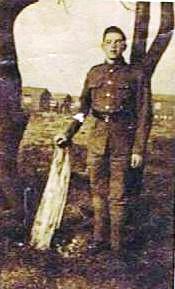
Percy was born in 1899 to William and Sarah (nee Johns) at Sutcombe, Holsworthy, Devon. His Father was a General Labourer. On leaving school he worked for the Printers, Messrs W. S, Cater and Co. in Launceston.
He enlisted at Launceston with the Somerset Light Infantry (Regimental No. 40127) serving with the 8th Battalion. By then the family were living at New Mills, St. Stephens. He died of his wounds possibly sustained during the Battle of Albert on the August 24th 1918 and is buried at the Bienvillers Military Cemetery, Bienvillers-au-Bois, Departement du Pas-de-Calais, Nord-Pas-de-Calais, France, Plot: XIX. F. 5. He is also commemorated on the St Thomas Church Roll of Honour. At the time of his death, his parents were living at Trethorne Gate near Tregadillet.
Battle of Albert (21–23 August 1918) was the third battle by that name fought during World War I, following the First Battle of Albert and the Second Battle of Albert, with each of the series of three being fought roughly two years apart. This smaller third battle was significant in that it was the opening push that would lead to the Second Battle of the Somme and involved the Australian Corps. This attack opened the advance, with the main attack being launched by the Third Army along with support from the Fourth Army. The Second Battle of Bapaume, from August 25th to September 3rd, was a continuation of this battle.
The attacks developed into an advance, which pushed the German 2nd Army back along a 50-mile front line. On August 22nd, the 18th (Eastern) Division took Albert, with the British and Americans advancing on Arras.On August 29th, during the Second Battle of Bapaume, the town of Bapaume fell into New Zealand hands. This resulted in an advance by the Australian Corps, who crossed the Somme River on 31 August and broke the German lines during the Battle of Mont St. Quentin. The Westheer (German armies on the Western Front) was pushed back to the Hindenburg Line, from which they had launched their spring offensive.
Sydney Crymes RUNDLE
Sydney was born in 1888 to John Kingdom and Hannah (nee Baker) Rundle at North Petherwin. His father was a farmer and Butcher and the family were living at Colhay farm, St. Stephens in 1911. He married Lillian Kate Bloye of Egloskerry in 1915. Sydney enlisted at Launceston with the Devonshire Regiment as a Lance Corporal (Regimental No. 30443) serving with the 2nd Battalion. He was killed in action during the Second Battle of Villers-Bretonneux on April 24th 1918. His body was never identified but his name is commemorated on the St. Stephens ‘Roll of Honour’.
The Second Battle of Villers-Bretonneux (also Actions of Villers-Bretonneux, after the First Battles of the Somme, 1918) took place from 24th to 25th April 1918, during the German Spring Offensive to the east of Amiens. It is notable for being the first occasion on which tanks fought against each other; it was the biggest and most successful tank action of the German army in the First World War.
John Trolove SHARPLEY
John was born in 1895 at Launceston to Clement and Edith (nee Eggins) Sharpley. His father, hailing from Lincoln, was a Bank accountant and by 1911 was a Bank Manager in Holsworthy. After leaving Dunheved College John worked as a Bank Clerk in Weymouth. He enlisted in August 1916 with the Middlesex Regiment (Regimental No. G/40131) as a private. He joined the 12th Battalion on September 1st, 1916 and was wounded whilst fighting in the Battle of Thiepval Ridge (part of the Battle of the Somme) on September 26th, 1916 and died later that day from his wounds. His body was never recovered but his name is commemorated on the Thiepval Memorial Pier and Face 12 D and 13 B, and also on the Holsworthy War memorial and Dunheved College Roll of Honour.
The Battle of Thiepval Ridge was the first large offensive mounted by the Reserve Army (Lieutenant General Hubert Gough), during the Battle of the Somme on the Western Front during the First World War. The attack was intended to benefit from the Fourth Army attack in the Battle of Morval, by starting 24 hours afterwards. The battle was fought on a front from Courcelette in the east, near the Albert–Bapaume road to Thiepval and the Schwaben Redoubt (Schwaben-Feste) in the west, which overlooked the German defences further north in the Ancre valley, the rising ground towards Beaumont-Hamel and Serre beyond. Thiepval Ridge was well fortified and the German defenders fought with great determination, while the British co-ordination of infantry and artillery declined after the first day, due to the confused nature of the fighting in the mazes of trenches, dugouts and shell-craters. The final British objectives were not reached until a reorganisation of the Reserve Army and the Battle of the Ancre Heights (October 1st – November 11th).
Reginald Garfield SKINNER
Reginald was born in 1897 to Thomas and Annie Skinner at Oak Farm, Whitstone, Cornwall. His Father was a Farmer. In 1910 his Mother died. On leaving school, Reginald went to work on his Fathers farm as a Horseman.
He enlisted at Bude on the 15th of December 1915 with the Royal Garrison Artillery (Regimental No.7549) as a Gunner serving with the 119th Siege Battery. He died of his wounds sustained possibly during the Second Battle of Arras on the 26th of April 1917. At the time of his death the family was living at Tresmarrow, Launceston. He was interred at the Savy British Cemetery, Aisne, France. His name is commemorated on the Whitstone War Memorial and the Royal Regiment of Artillery Memorial.
John SLOMAN
John was born in 1896 to John and Elizabeth Sloman at Tredidon, St. Thomas, Launceston. His Father had a varying career mainly as an Agricultural Labourer but also as a Gardener something that John was helping with as a Garden Domestic with the family living at Woodlands, South Hill in 1911. He had attended both Coads Green Sunday School, and School. The family had also lived at Tregillis, South Petherwin. By the time of his death in 1916 the family had moved to Warra Farm, Yeolmbridge. He enlisted at Cardiff with the Royal Horse Artillery and Royal Field Artillery as a Gunner (Regimental No. 105088). He was killed in Action on the 18th of October 1916 at the Battle of the Somme. His body was never identified but his name is commemorated at the THIEPVAL MEMORIAL and on the North Hill War Memorial.
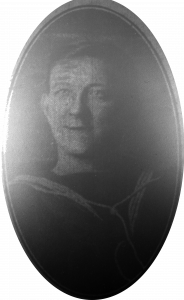
John (or Jack as he was known) was born on the 10th of March 1883 to John and Annie Towl at Trebursye, Near Tregadillett. His Father was a General Labourer. By the 1901 census, Jack was working for a Mr. Weeks at Sheers Barton, Lawhitton as an Ordinary Farm Labourer. He joined the Royal Navy on the 17th of November 1902 as a Stoker (Service No.301983) and his first ship was ‘HMS Prometheus‘. He rose to Stoker 1st class by the outbreak of War in 1914 serving upon the light cruiser ‘HMS Cordelia.’ He saw many naval engagements including the Battle of Jutland.
He was killed on the 22nd of December 1917 when his ship, ‘HMS Valkyrie,’ hit a mine just of the Dutch coast. He was buried at St. Thomas Church, Launceston. He is commemorated on the St Thomas Church Roll of Honour.
While escorting a convoy from the Dutch coast ‘HMS Valkyrie’ struck a mine five miles west of Maas light. She remained afloat and was taken in tow by ‘HMS Sylph’ and made it back to Harwich. She lost 21 of her crew in the explosion.
William WATTERS
William was born in 1890 to Abraham and Maria Watters at Launceston. His Father died when William was still at a young age and his Mother remarried to Fred Osbourne. By 1911 he is working as a Waggoner for a Confectionary Company and living with family at Tower Street, Launceston. He married Caroline Haines in 1916 at Launceston and they had one child. He served with the Worcester Regiment as a Private. He was killed in action on April 28th, 1918.
William Whyte (Although not from Launceston, he died here)
William was born in 1894 at Cambuslang, Glasgow to Mr. and Mrs W. Whyte. William worked in the land valuation service in Glasgow. A month after war broke out, September 14th, 1914, he enlisted with the Gordon Highlanders. He was sent for training to the Aberdeen depot, where he remained until March, 1915, when he was included in a draft sent to France to serve with the 1st Battalion becoming a Sergeant (Regimental No.S/3277). During the months that followed, he was wounded thrice, once by a shell that burst in his billet. The wound that that finally disabled him was received on September 25th, 1915, in operations preliminary to the Battle of Loos. It was in the course of a feint operation, two hours before the advance at Loos, that a bomb exploded between his feet inflicting terrible injuries on him. He was removed to the base hospital at Etaples, where he underwent amputation of the left leg. Recovering, in the middle of October, 1915, he was transferred to the V.A.D. Hospital at Newton Abbot. There he remained until the beginning of January 1915, when he was sent to convalesce at Launceston. His uniform cheerfulness under his affliction endeared him to many in the town. He was improving until complications began in his right leg. After an unsuccessful operation on his leg at the Rowe Infirmary Launceston, he had an attack of pleurisy. He passed away on April 4th, 1916 with the immediate cause of his death being septicemia. His military funeral was held on Friday, April 7th, 1916, with the cortege leaving the hospital at 2:30 p.m., for St. Thomas Church where the service was held, before internment in the churchyard. The service was conducted by the Rev. Haworth assisted by the Baptist minster, Rev. D. Dighton Bennettt. The chief mourners were his parents, and his two brothers, Gunner P. M. Whyte, R.G.A., and Private James Whyte, B Sc., Argyle and Sutherland Highlanders. The Vicar gave the following lines written by William just before his death at a memorial service held the following Sunday:
‘I gave a limb in my Country’s cause;
I’m marked until I die.
Much more would I give to bring back peace
And kill the battle cry.’
Whilst his parents were in Launceston for William’s funeral, they received the news that another son, John, had been died at the age of 20 of acute pulmonary oedema. William is also commemorated on the Cambuslang Baptist Church Roll of Honour.
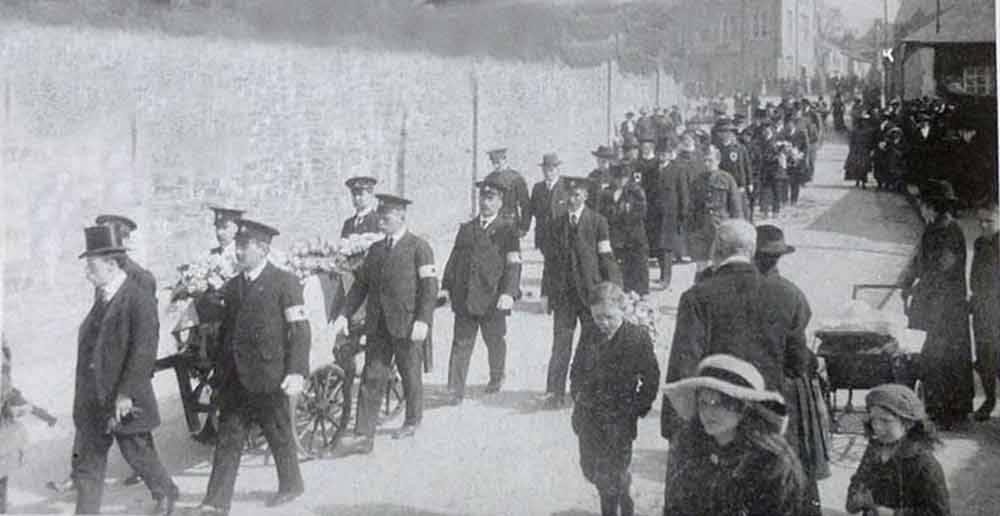

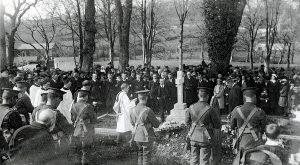
The men that follow actually survived the war but later suffered or passed away as a result of their war service.
Charles Samuel CAUSLEY
Charles was born in St. Thomas, Ontario, Canada in 1887 of British parents and worked as a Gardener. He married Laura Bartlett in 1915 and they had one son, the poet Charles Stanley Causley. Charles died in 1924 of a lung condition induced by the conditions under which he served with the Army Service Corps (Service No.T4/2443) in the trenches during the First World War.
Francis George DAVEY
Francis was born in 1891 to George and Jane A. Davey at Launceston. His father was a postman. He became an assistant teacher working at Horndon on the Hill, Essex by 1911. He passed away after a long illness, contracted in France during the war. The death took place at Aylesford, Kent, in 1924.
Arthur LEAMON
Arthur was born in 1890 to Edward and Mary Leamon at Launceston. His father was a bank clerk. Arthur joined the DCLI (Regimental No’s 8954, 542911) sometime before 1911. He died on June 15th, 1925 with heat exhaustion in Lucknow, India and was buried the following day. At the time of his death he was Colour Sergeant Major with the 1st Battalion of the DCLI. It was believed that his death wasn’t helped by his time serving during the First World War.
Thomas Henry MEDLAND
Harry as he was known was born in 1883 to Edwin and Grace Medland at Boscastle. He was the brother of Charles and Richard Medland who both died during the war. In 1906 Harry emigrated to Canada but returned with a Canadian regiment to fight in the war. There is little information available but although he survived the war, he died on his return to Canada due to the effects of the war.
Henry William Hugh SMITH
Henry was born in 1882. His death took place last month 1924 at Shaughnessy Military hospital, says the Daily Provence of Vancouver of Mr Henry William Hugh Smith at the age of 42, as a result of his war service. He left a widow (formerly Miss Louise Gale, of Chaple House, Launceston) and 2 children, who lived in Vancouver.
Frederick Edward VIVIAN
Fred was born in 1897 to Henry and Mary Vivian at Plymouth. On leaving school he worked as a cowboy for Mr. Titus Shute at Trewithick farm, Truscott. He married Mabel Paul in 1918. He enlisted with the DCLI as a private (Regimental No. 23987) and served throughout the war on the Western Front. However he suffered from terrible shell shock which was to blight his health for the rest of his life. He did return to live at Langore with his wife and continued to work as a farm labourer, but his health slowly let him down and he died at home in April 1960.
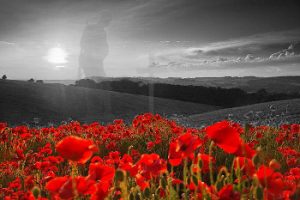
Visits: 296

